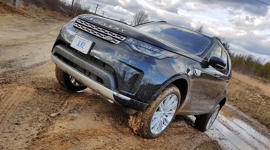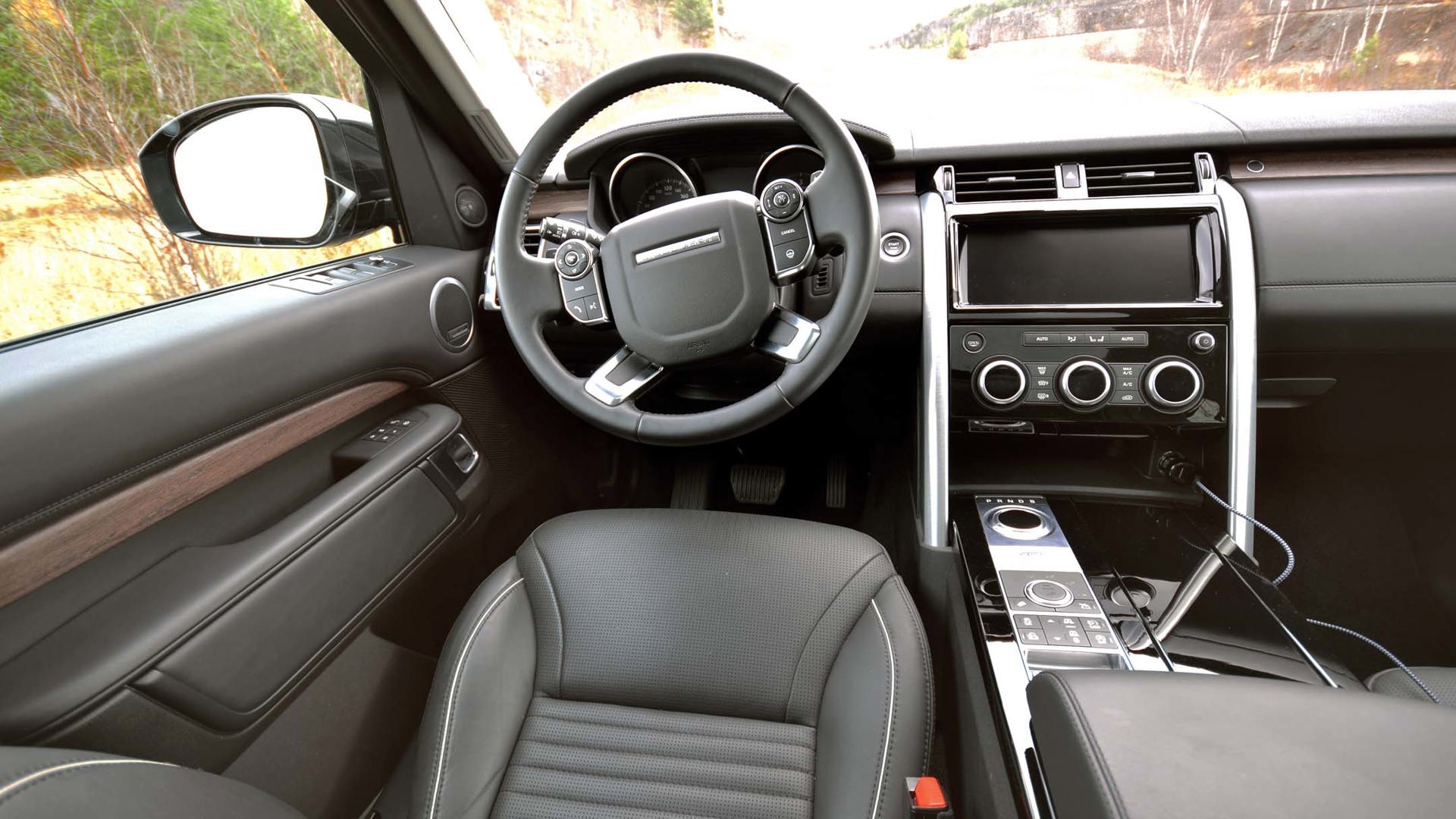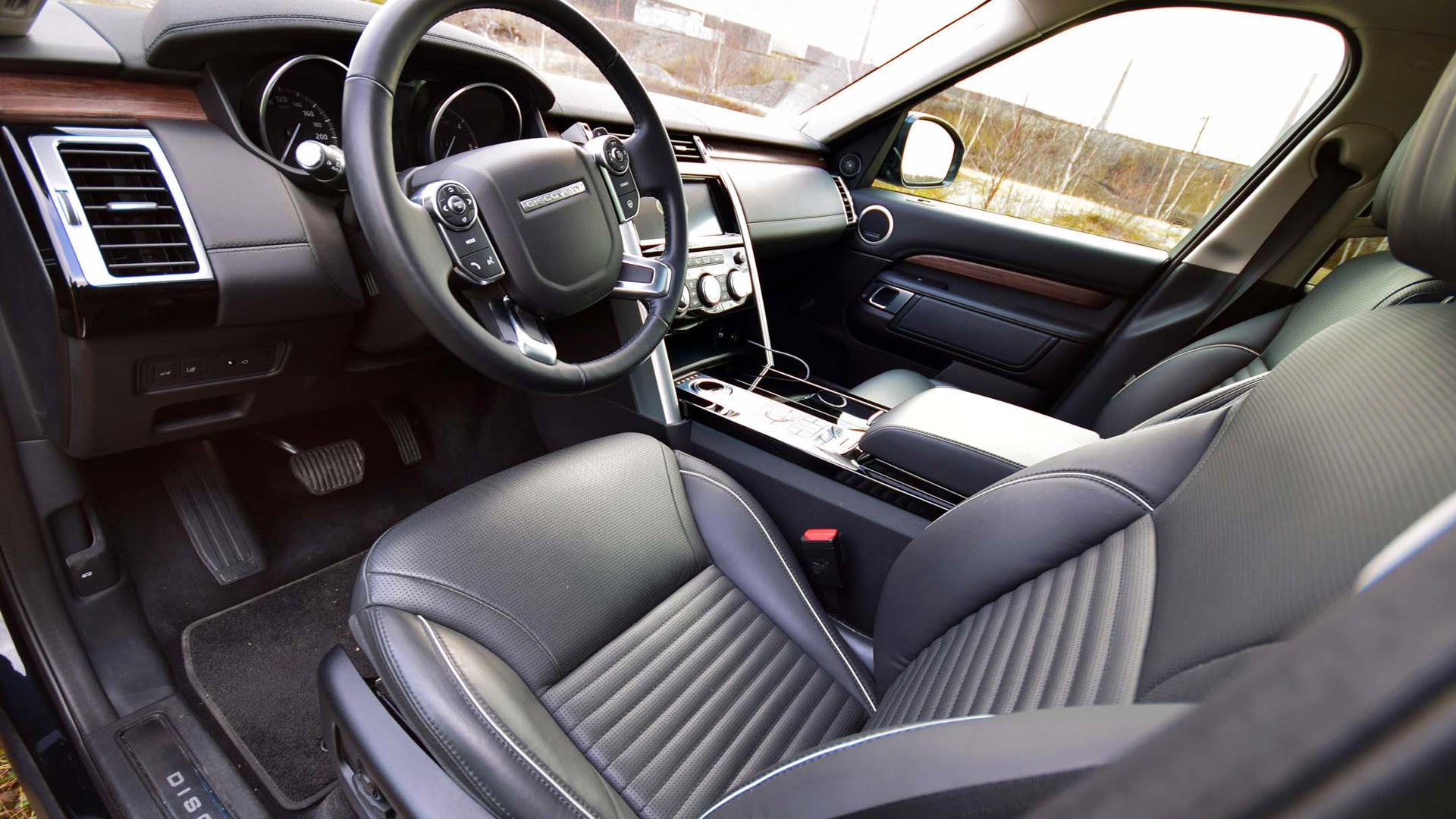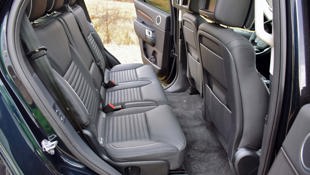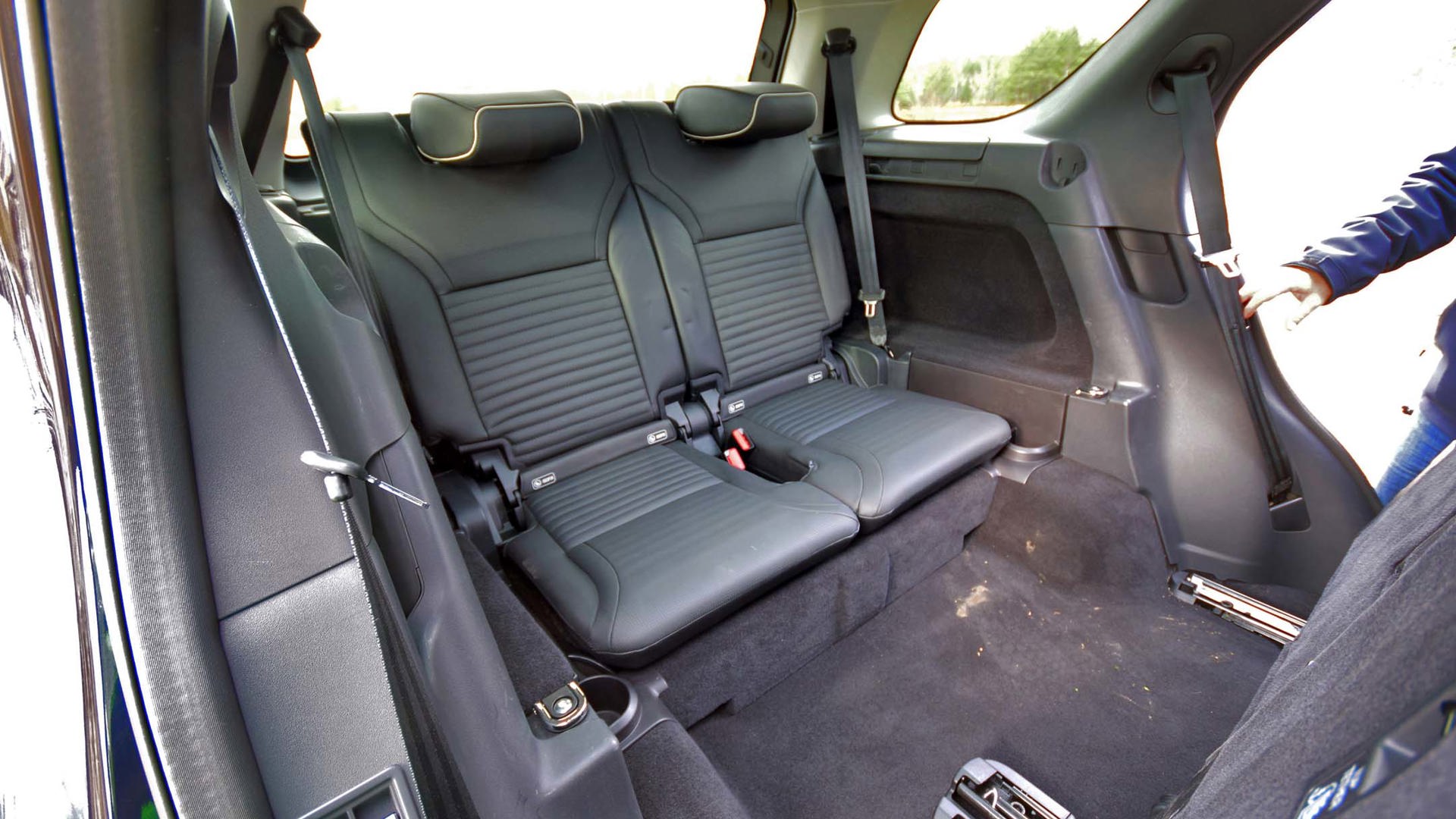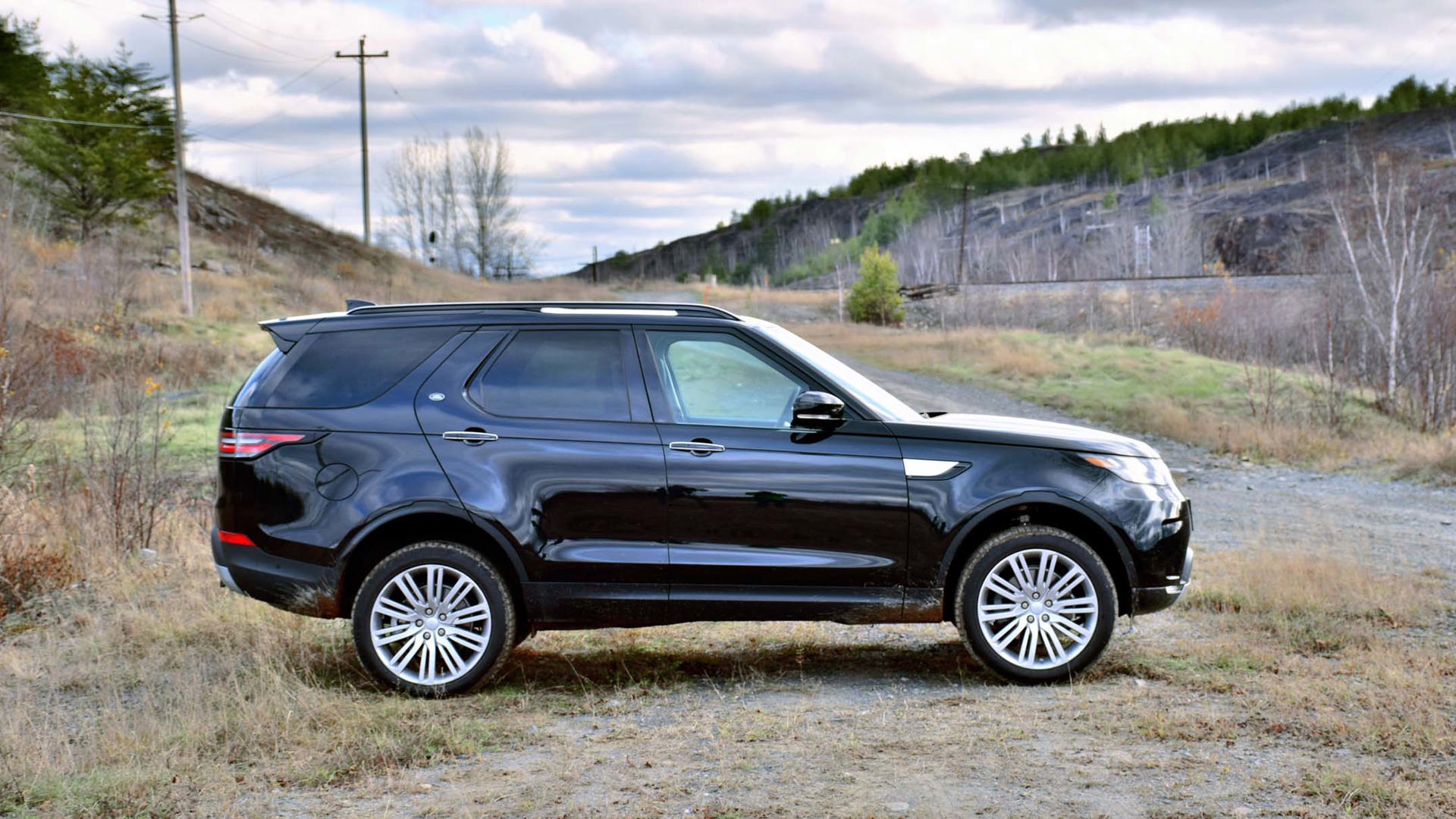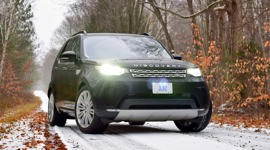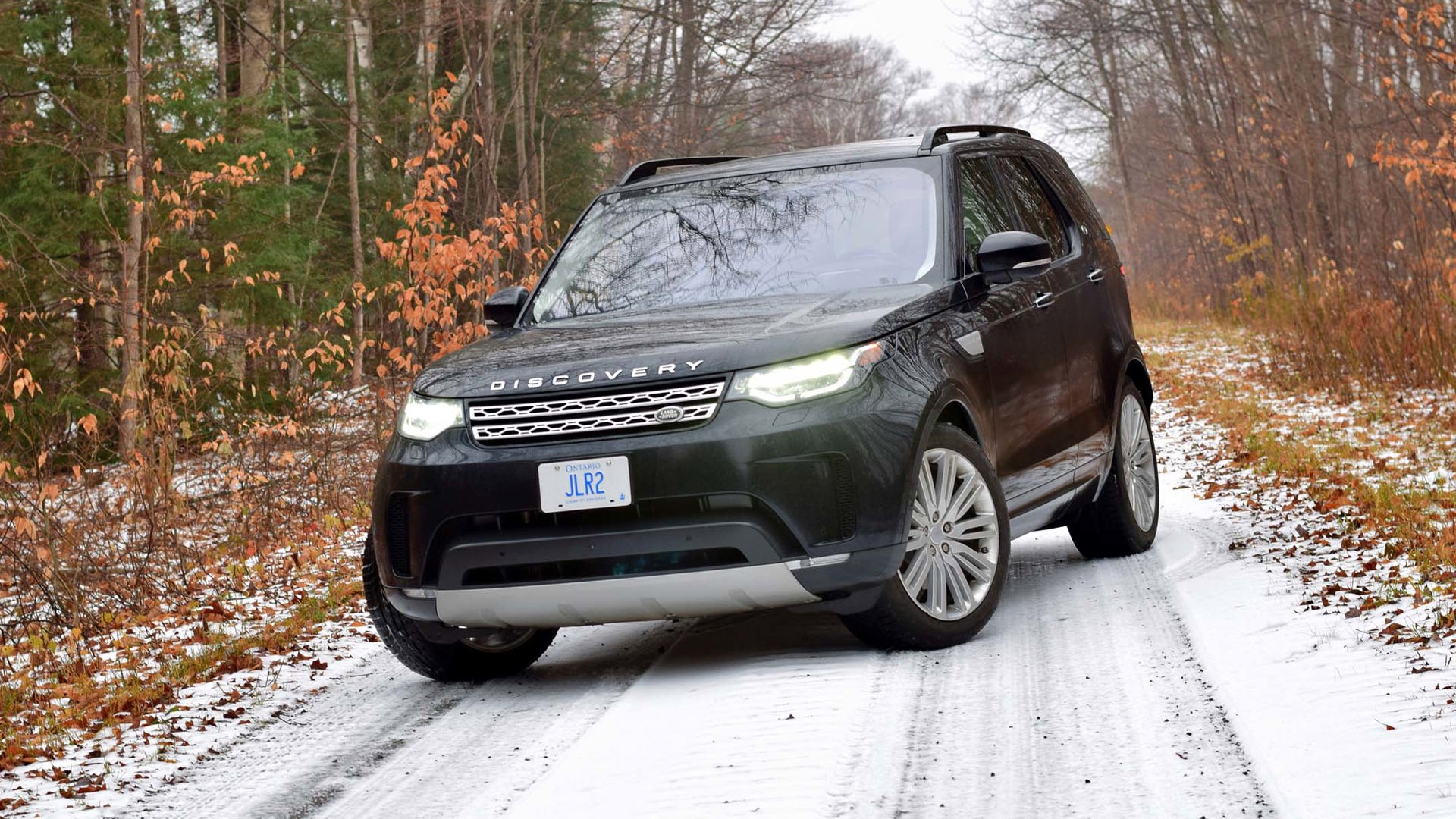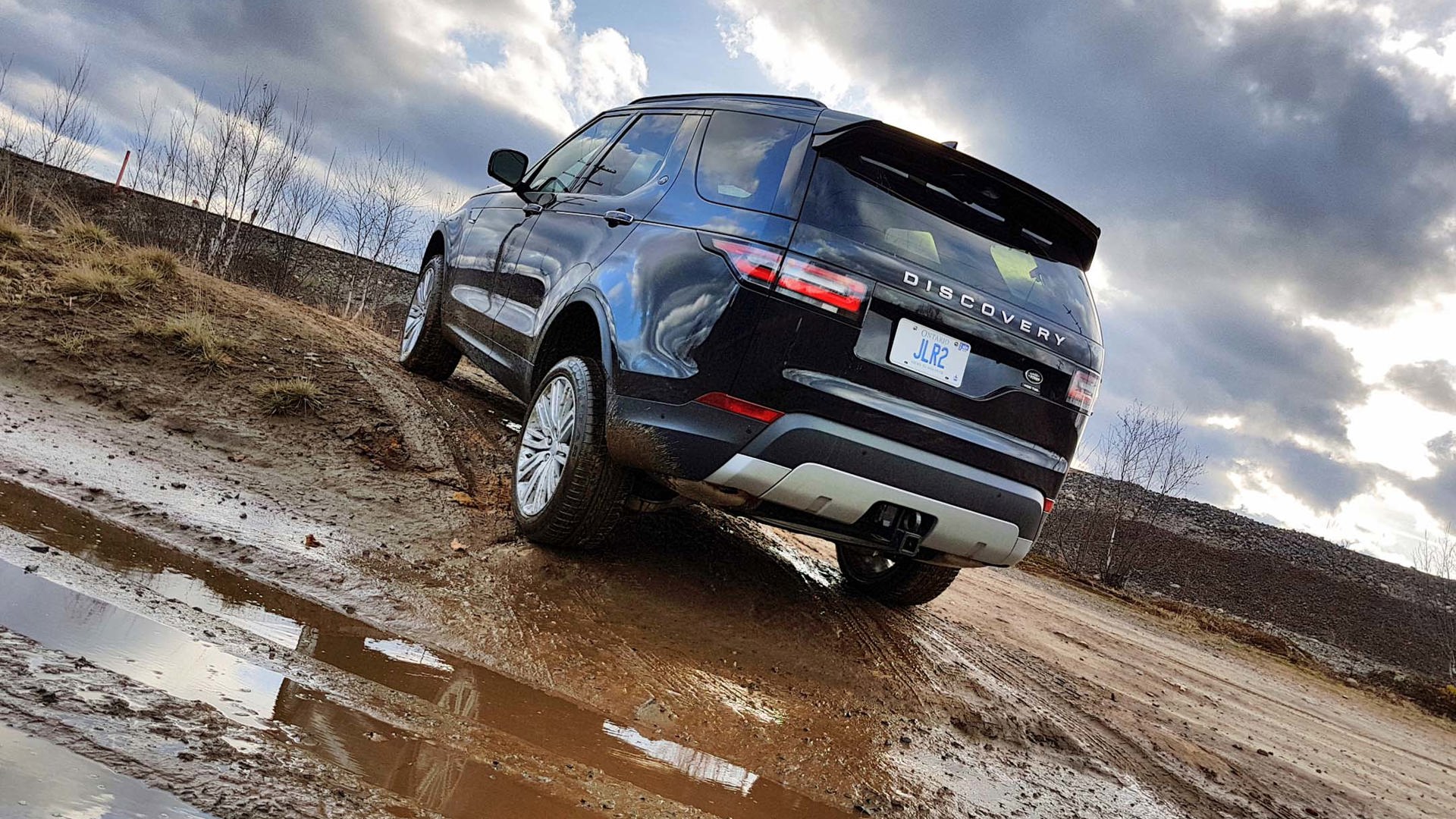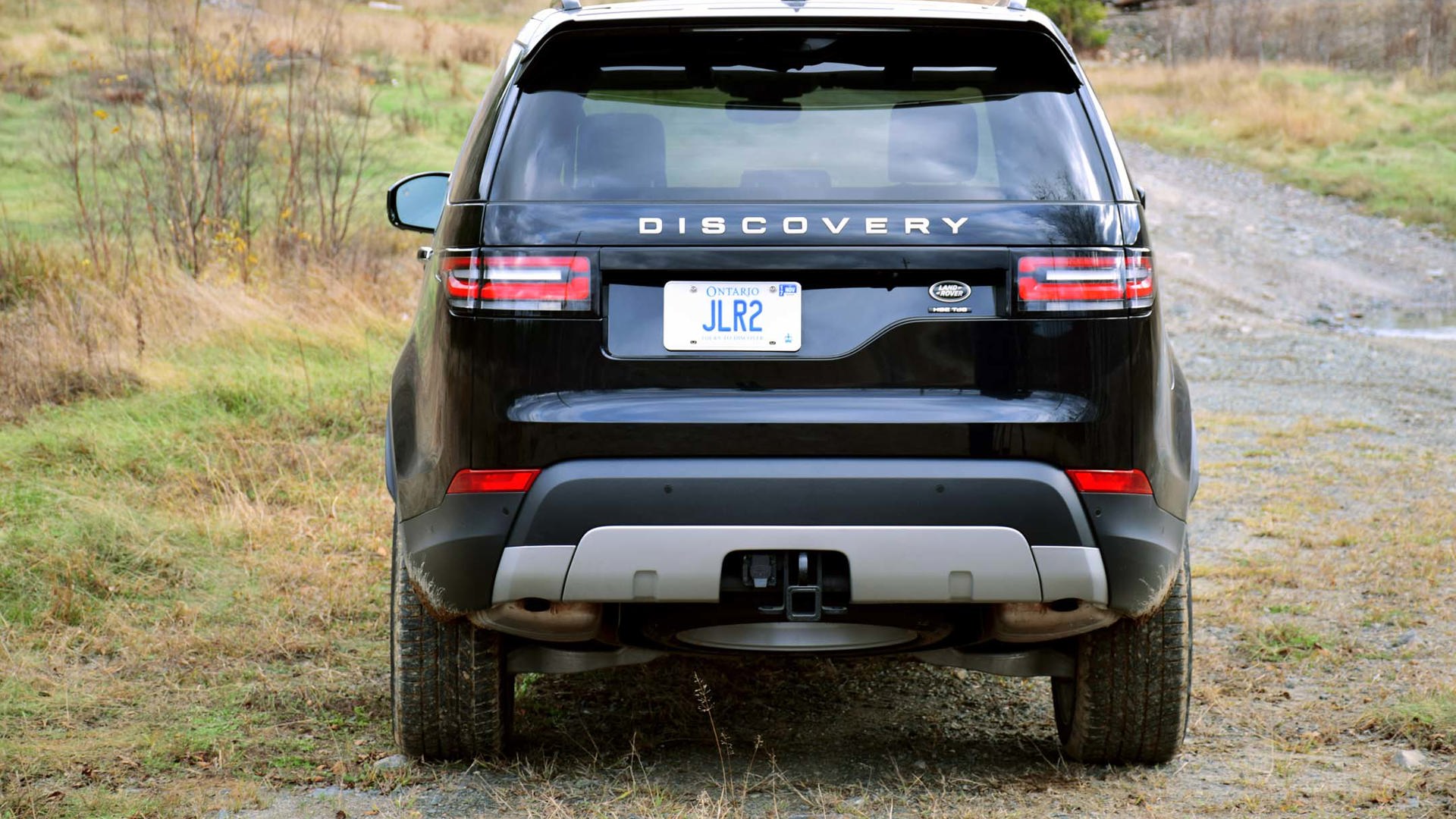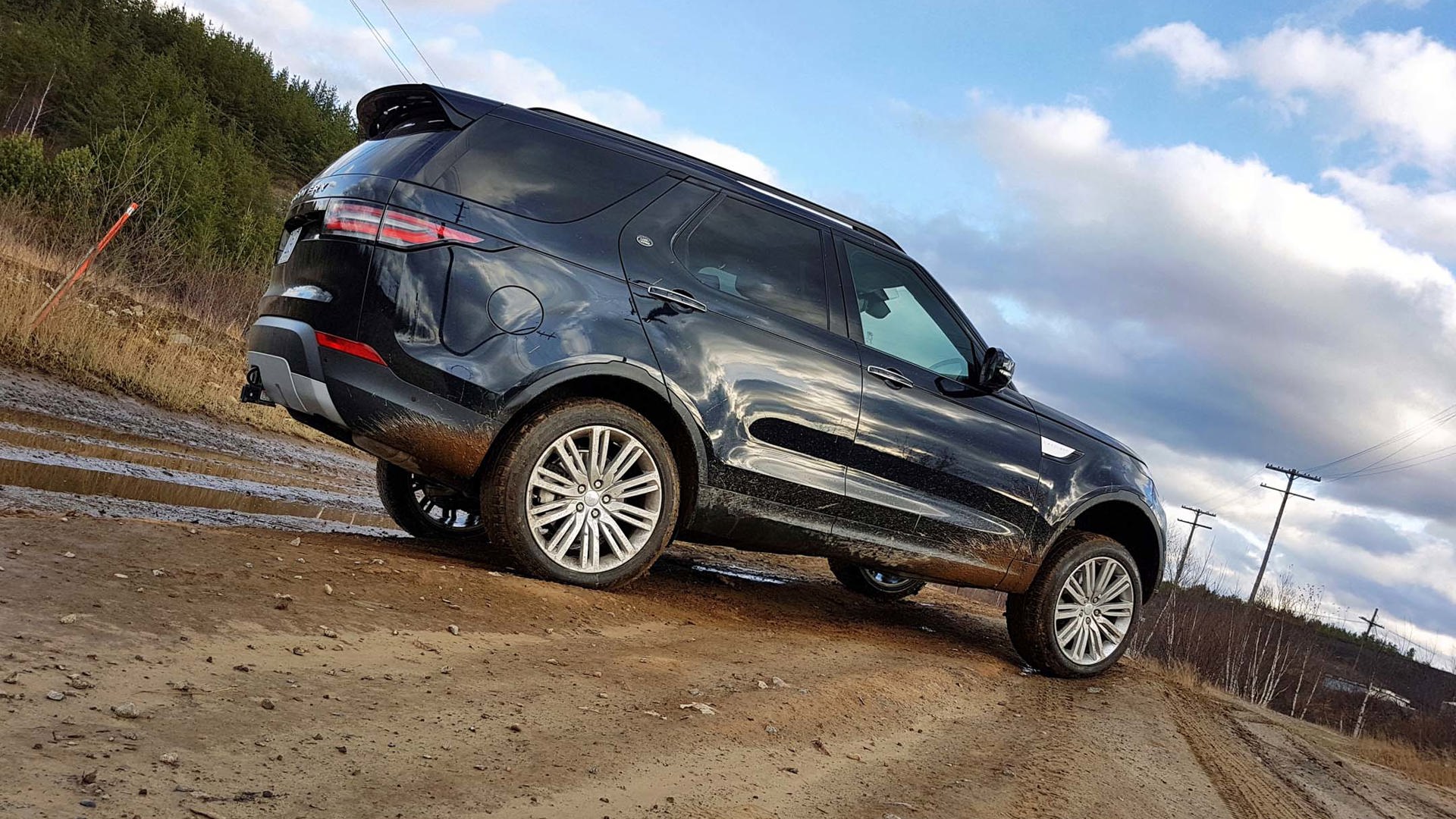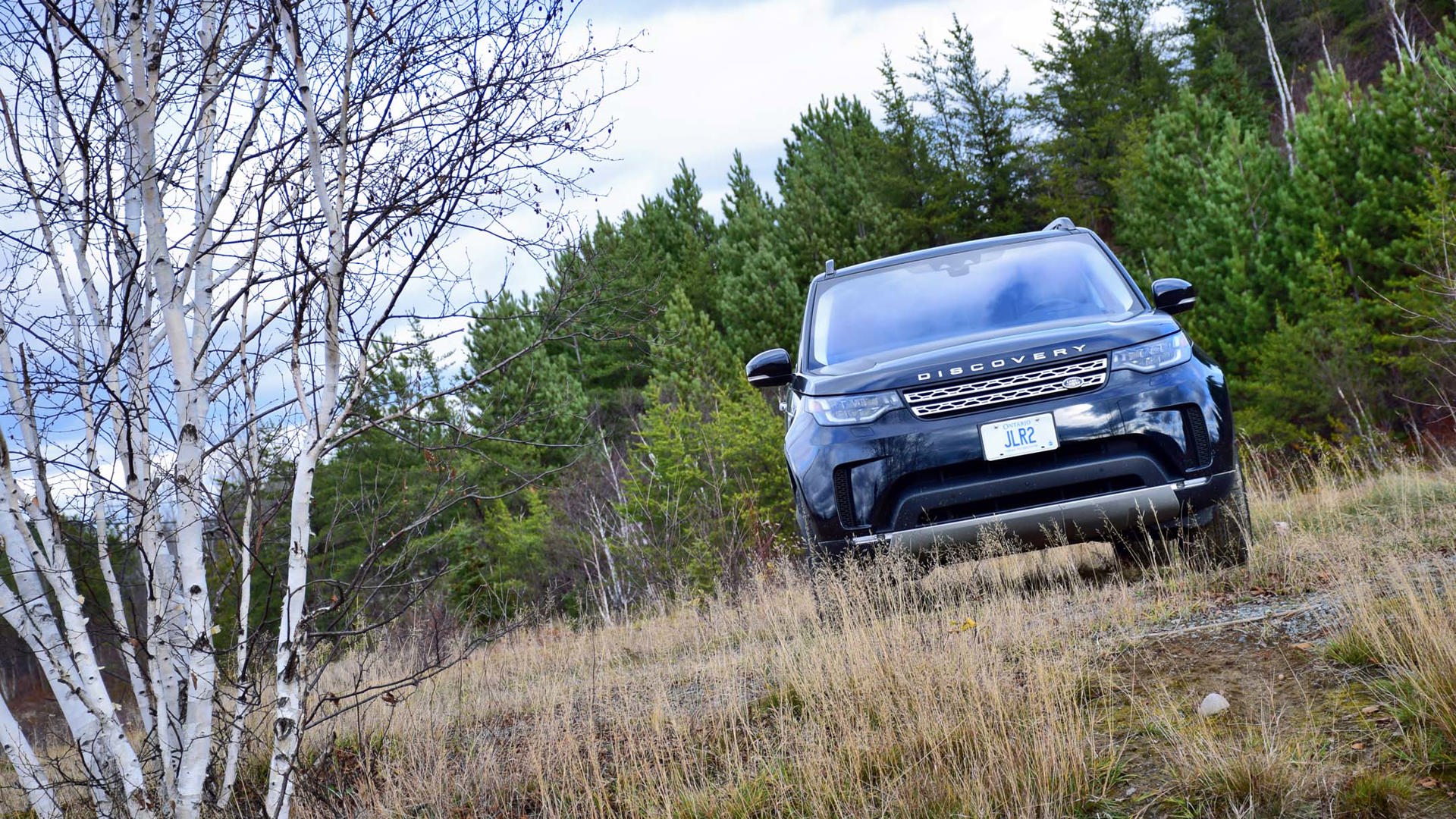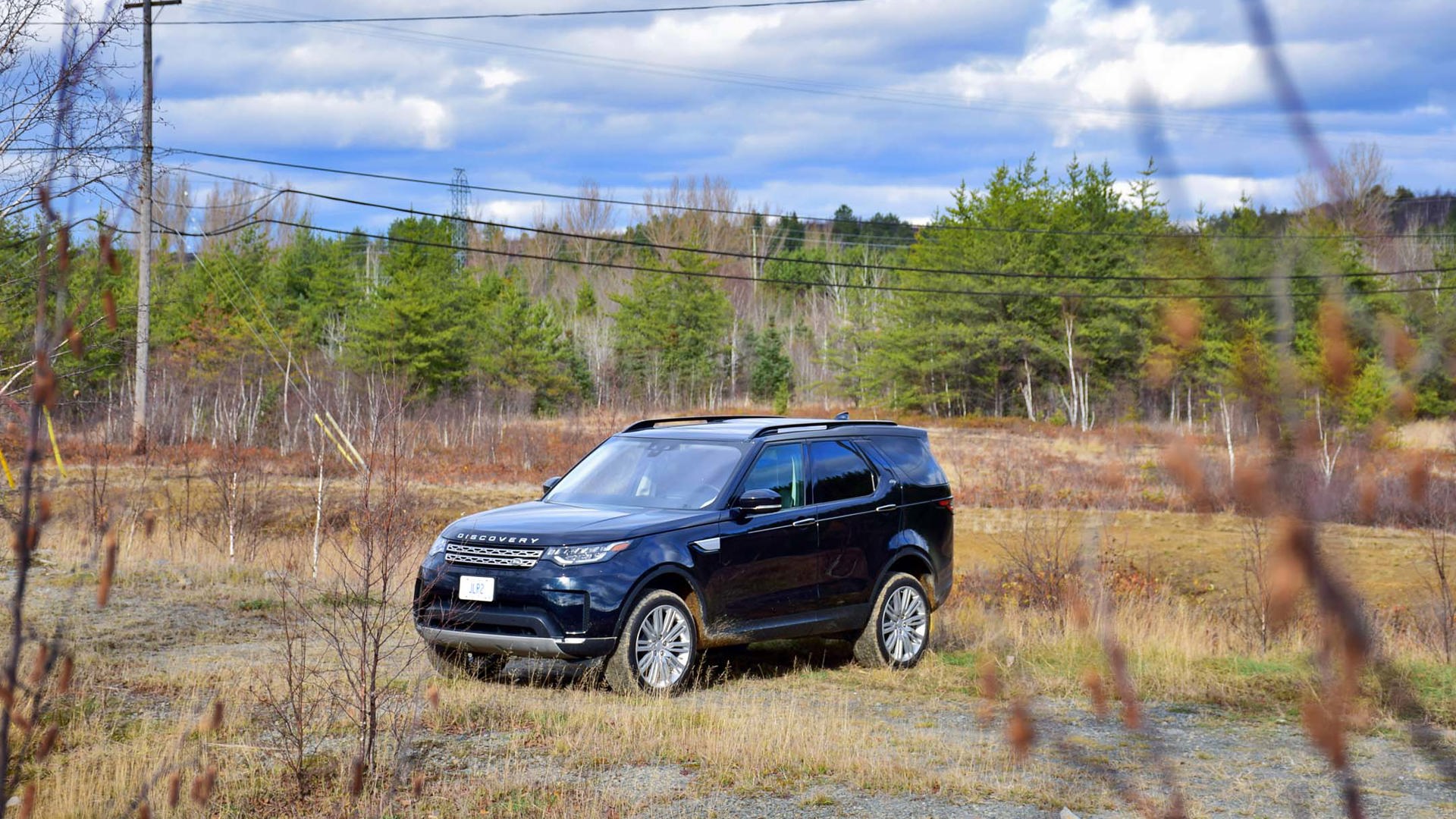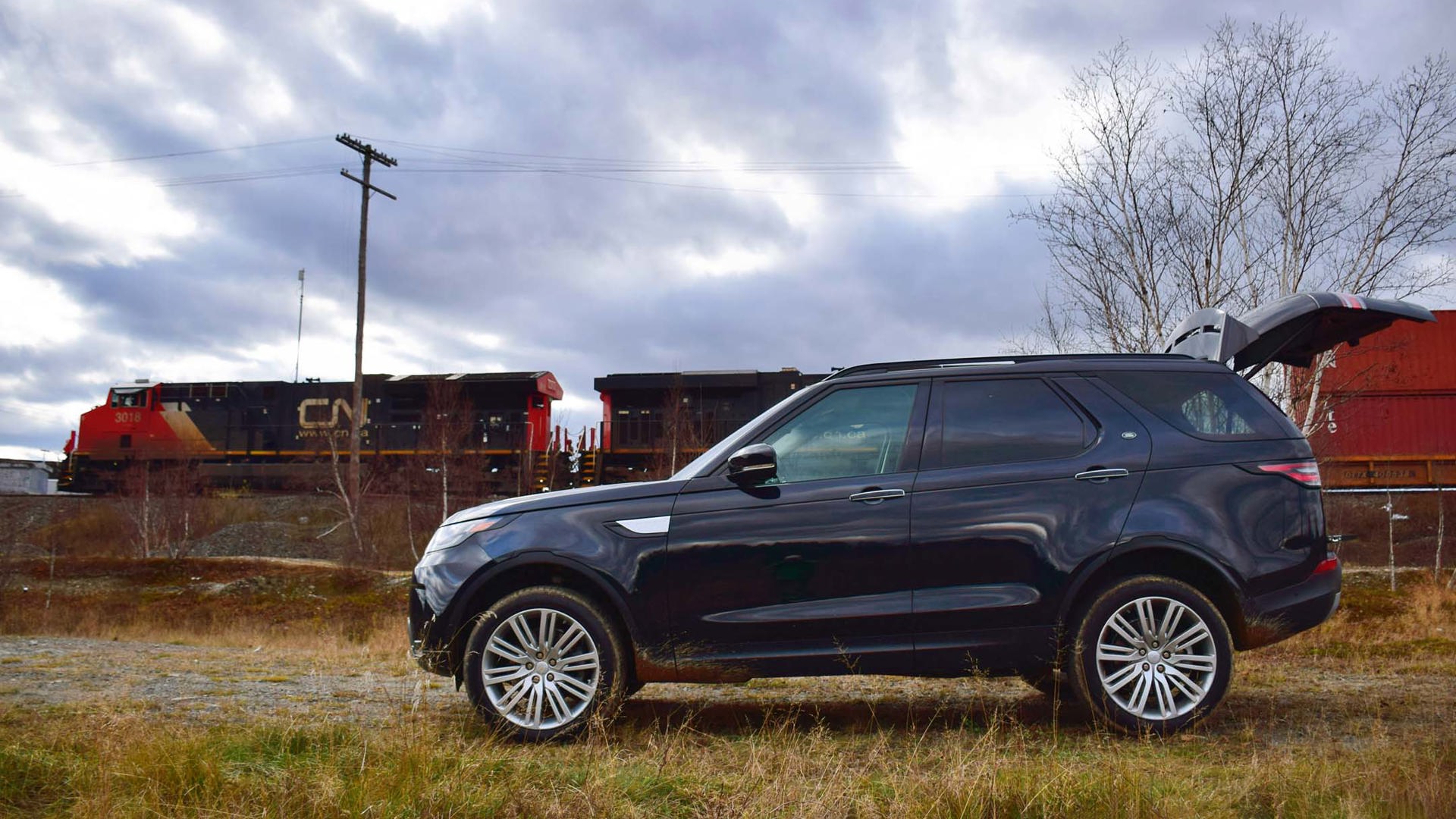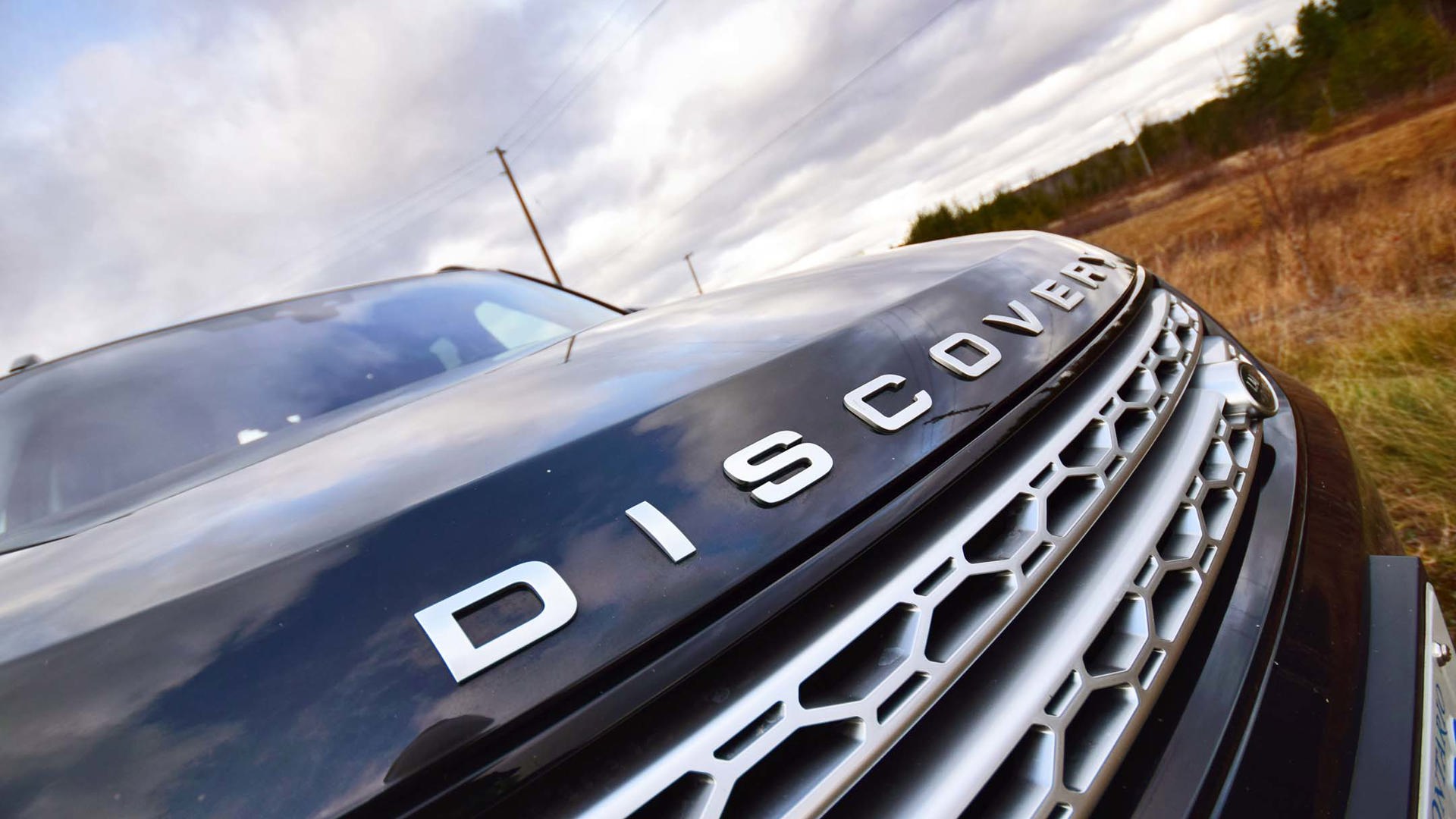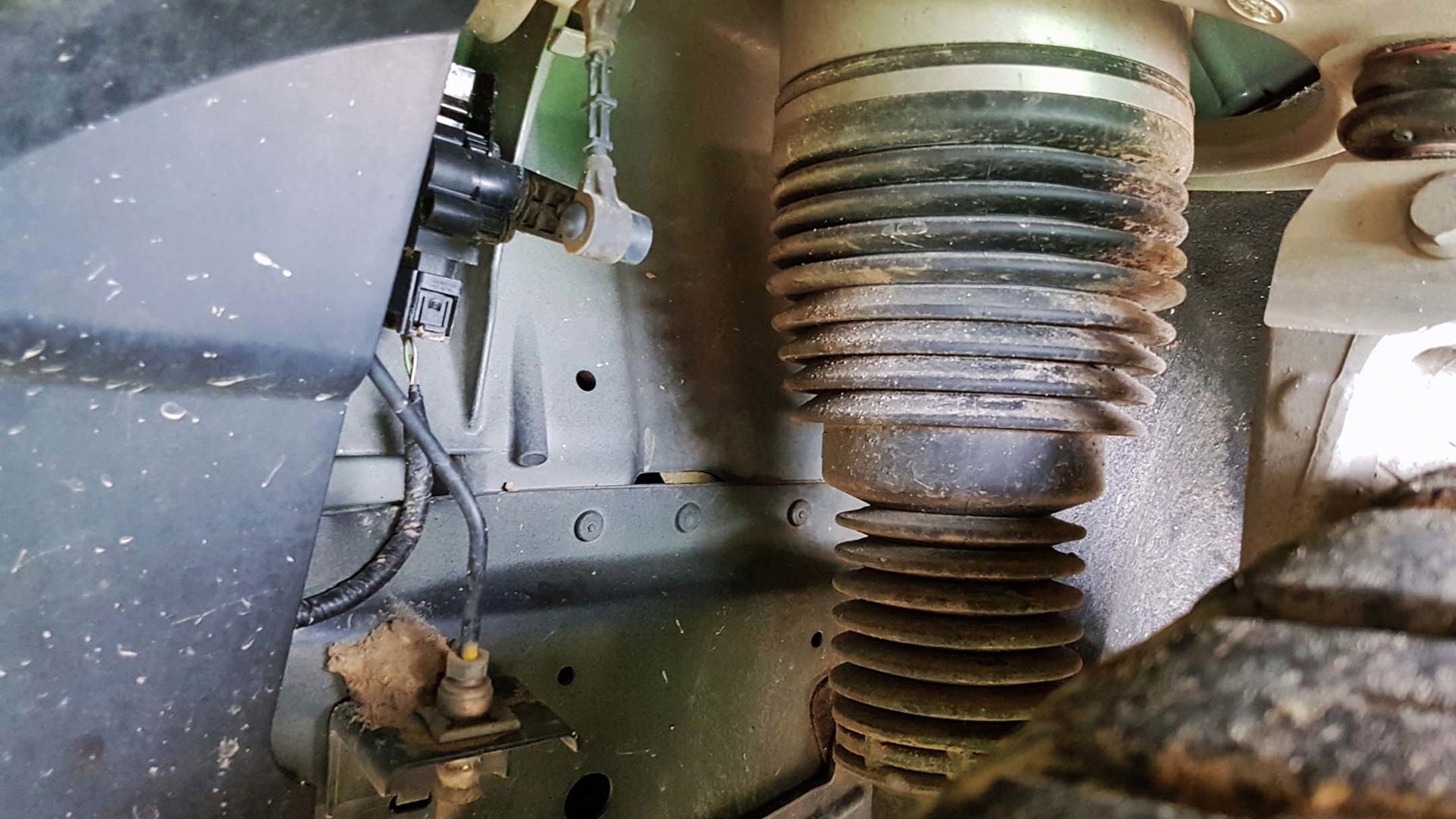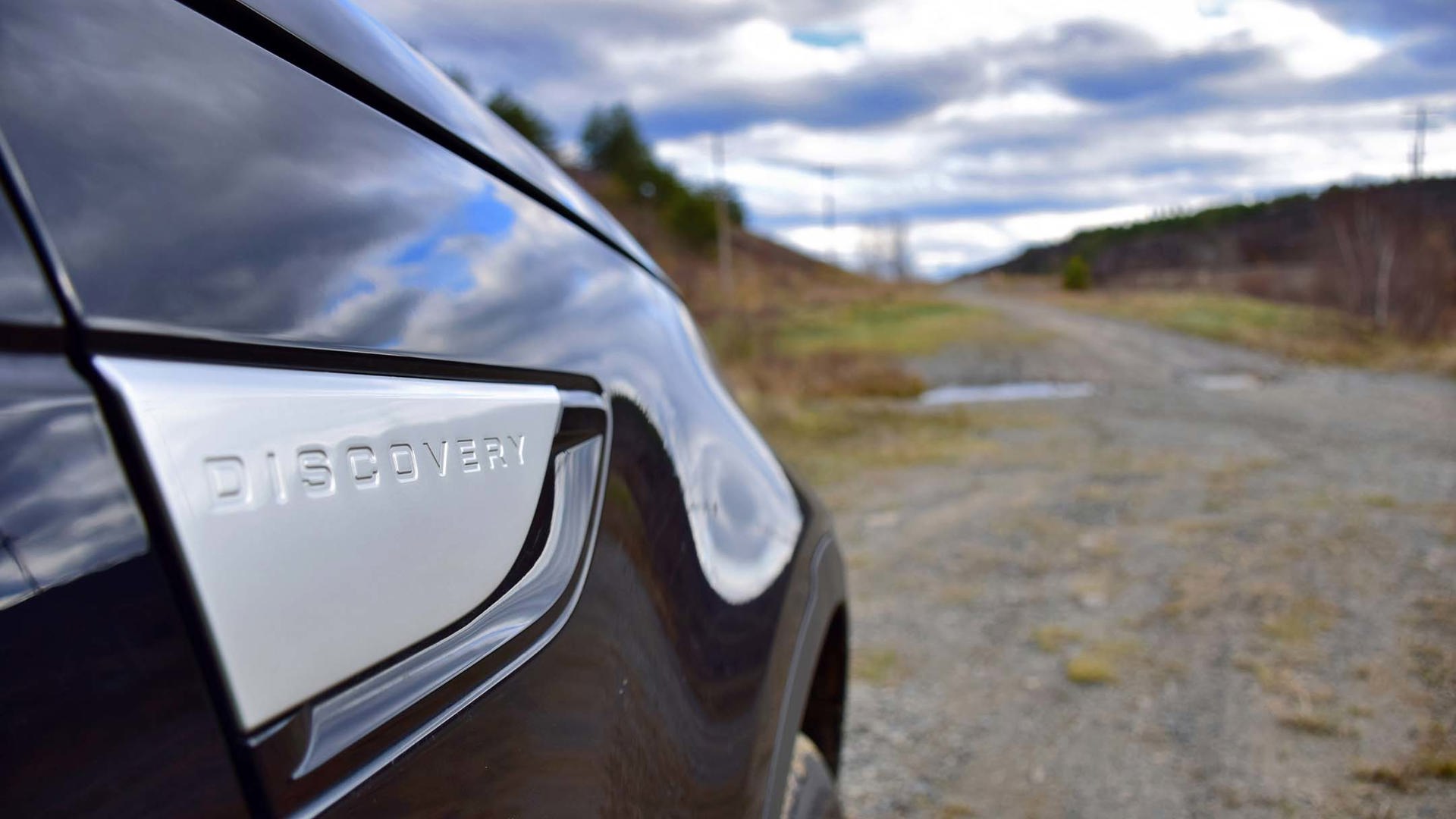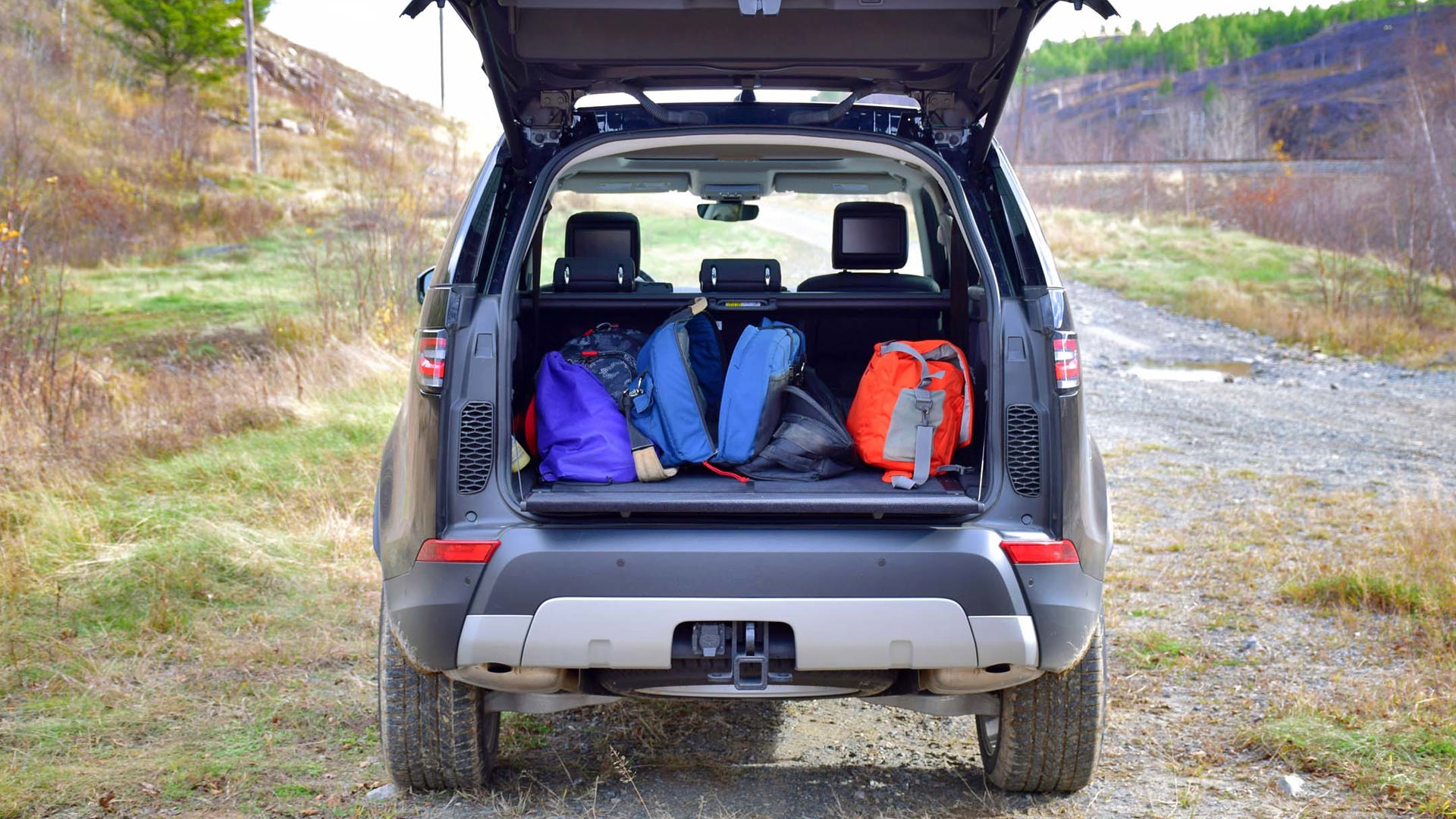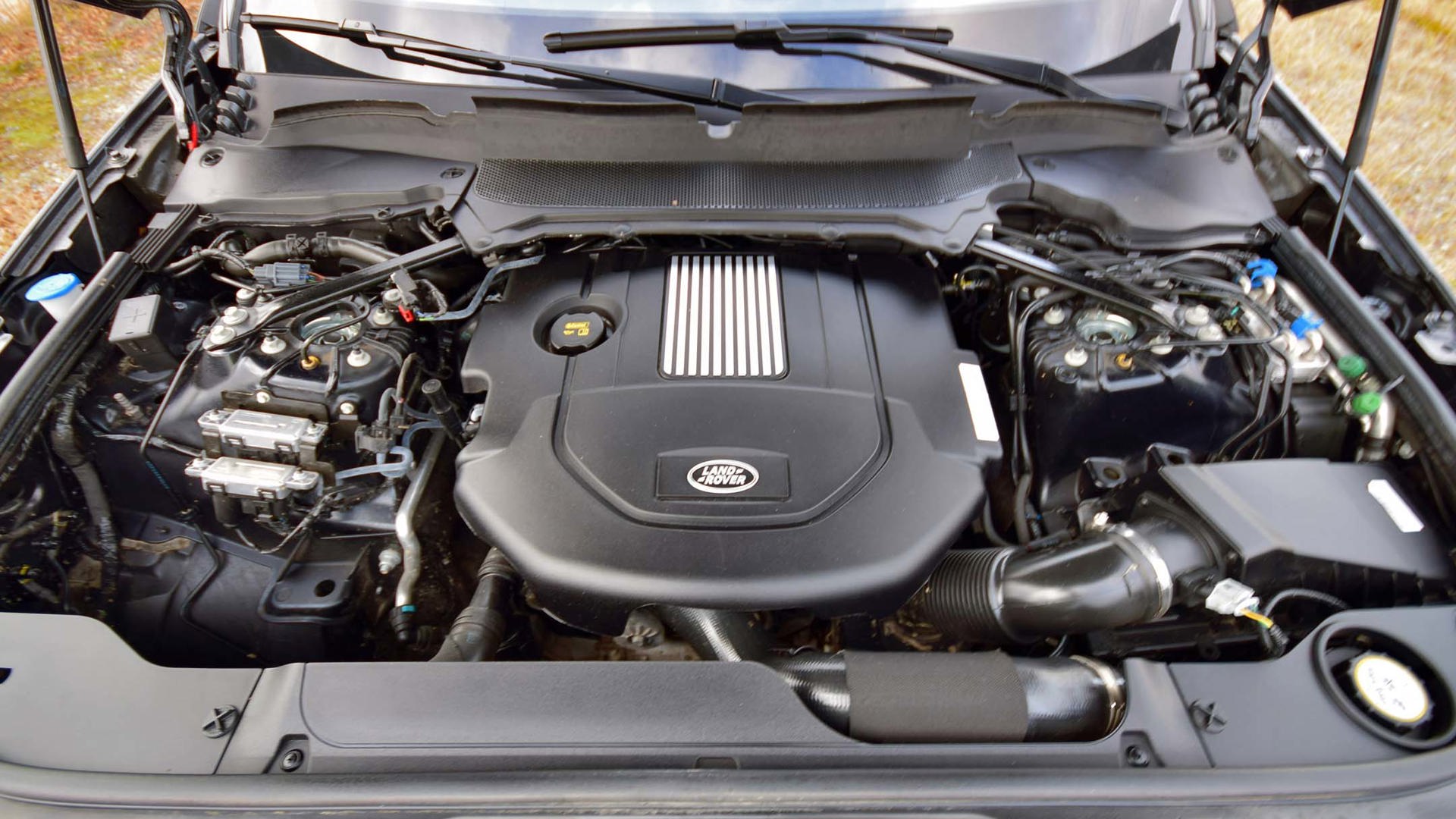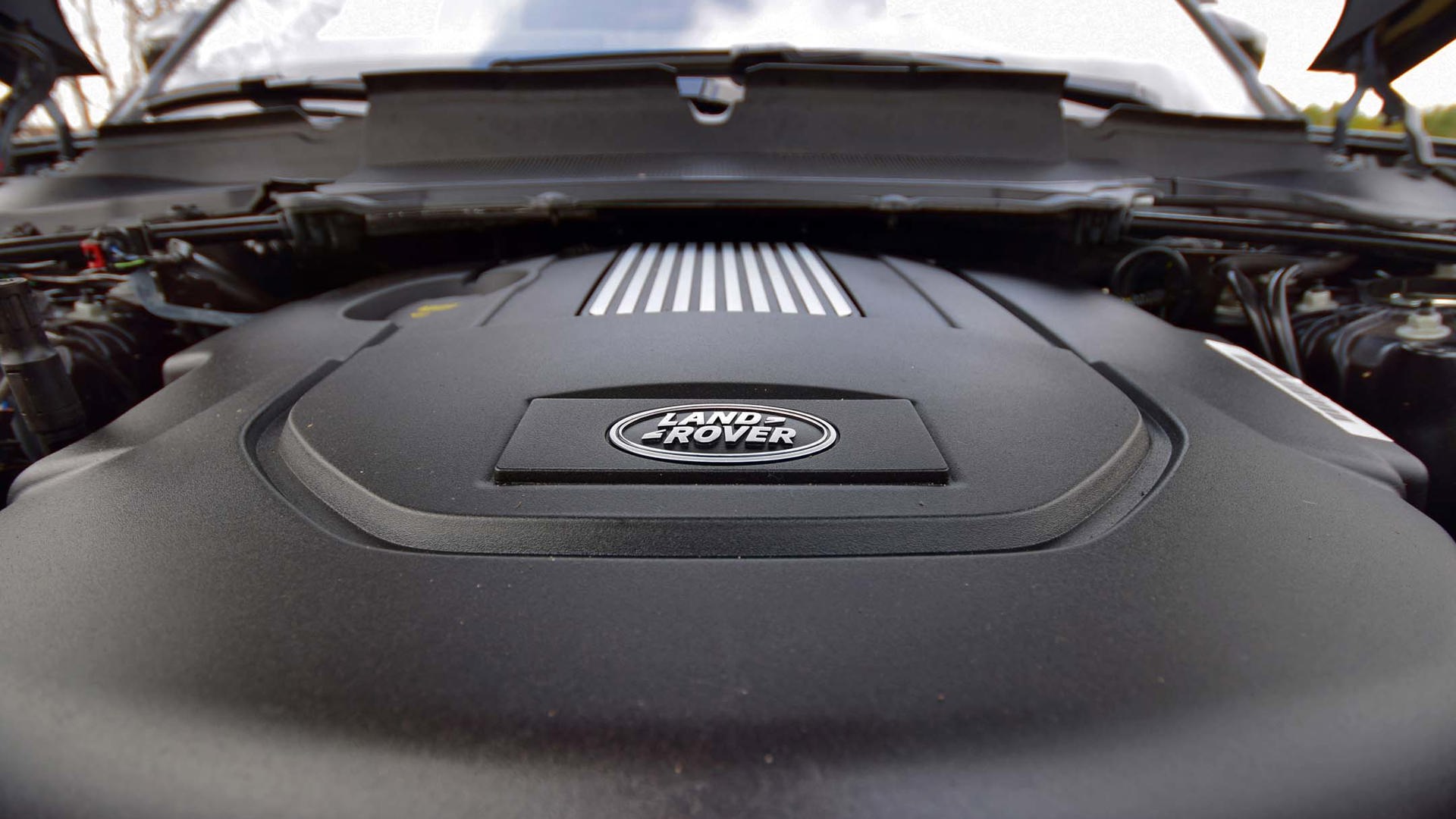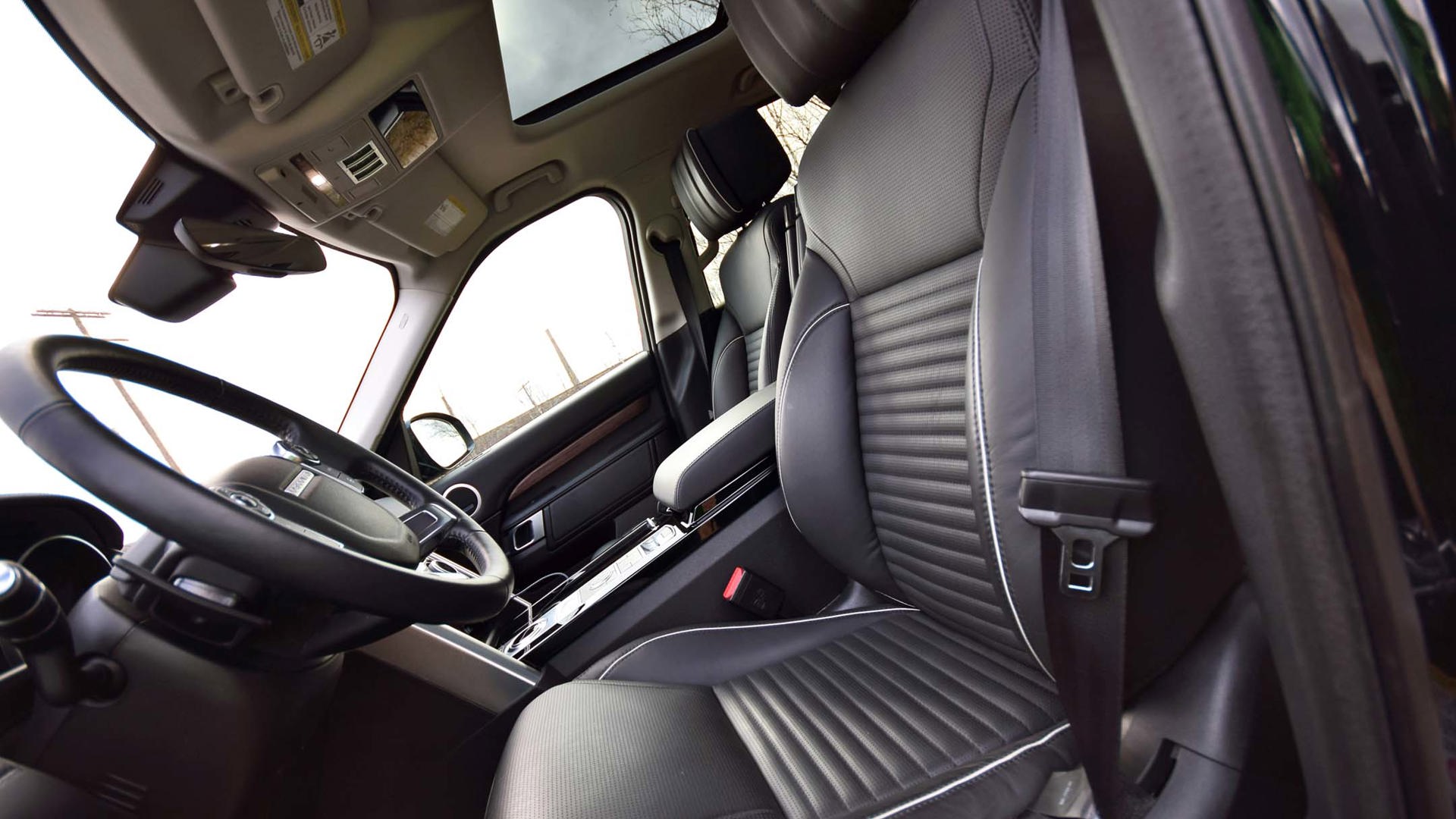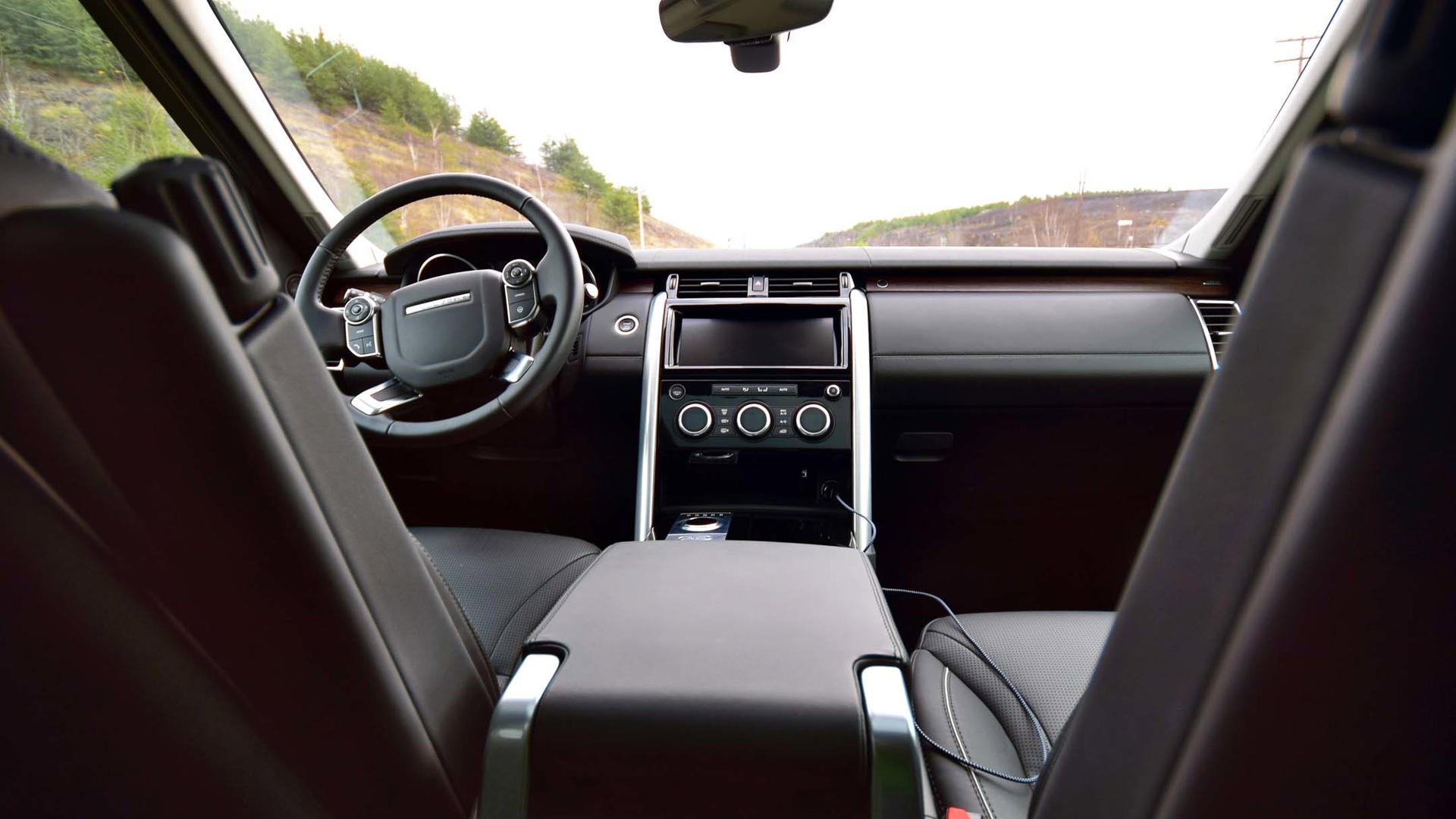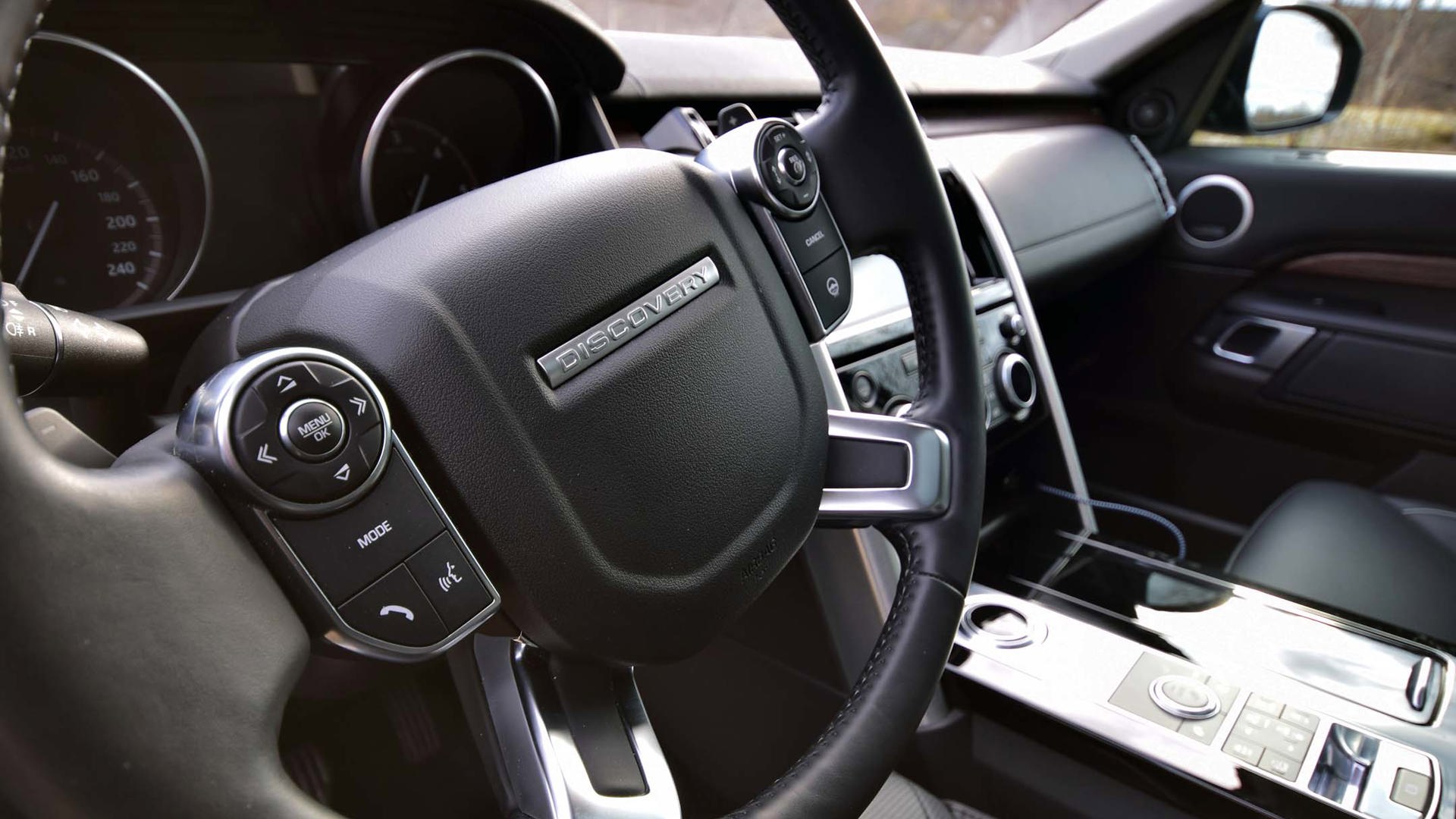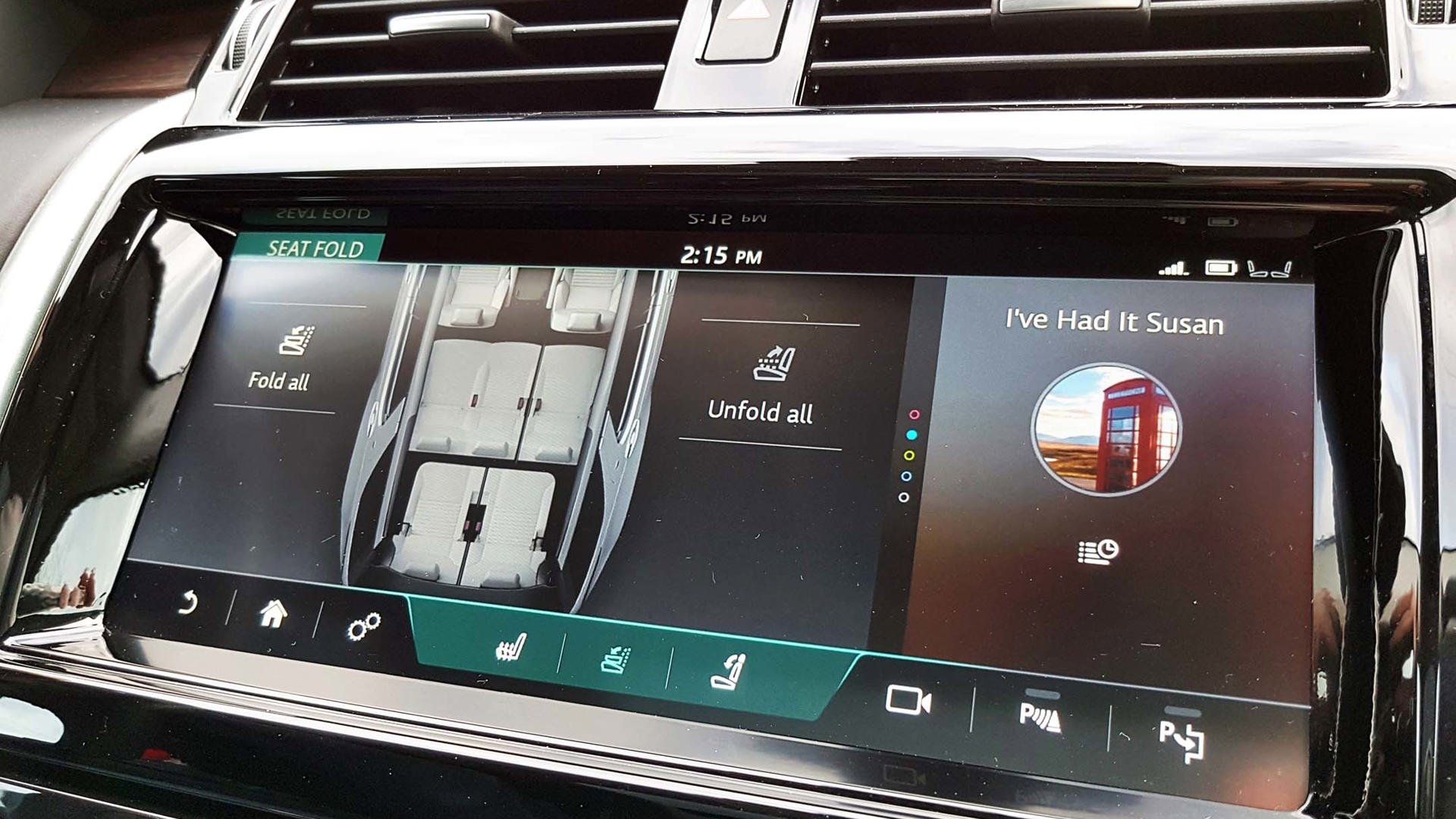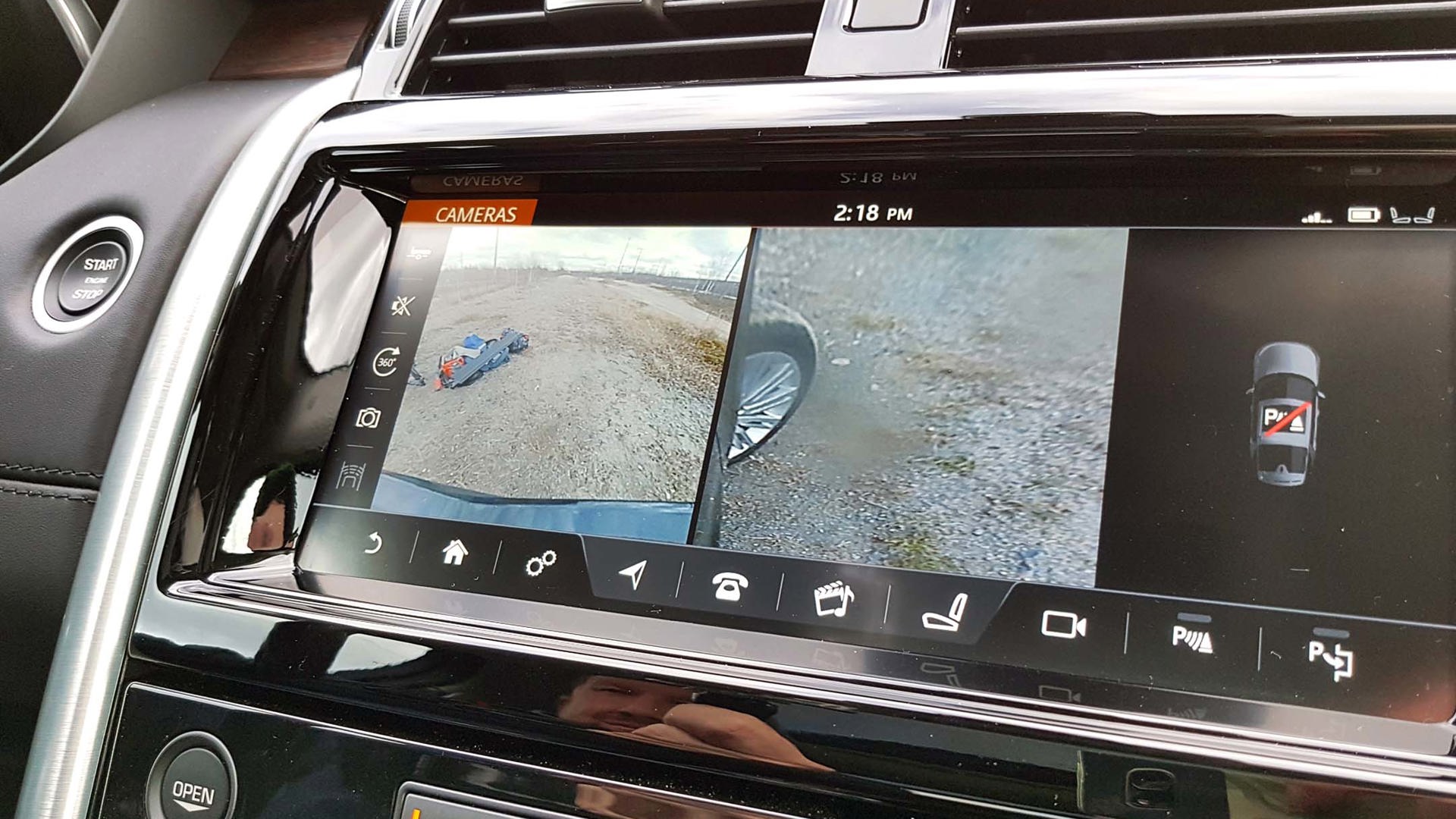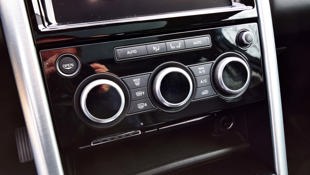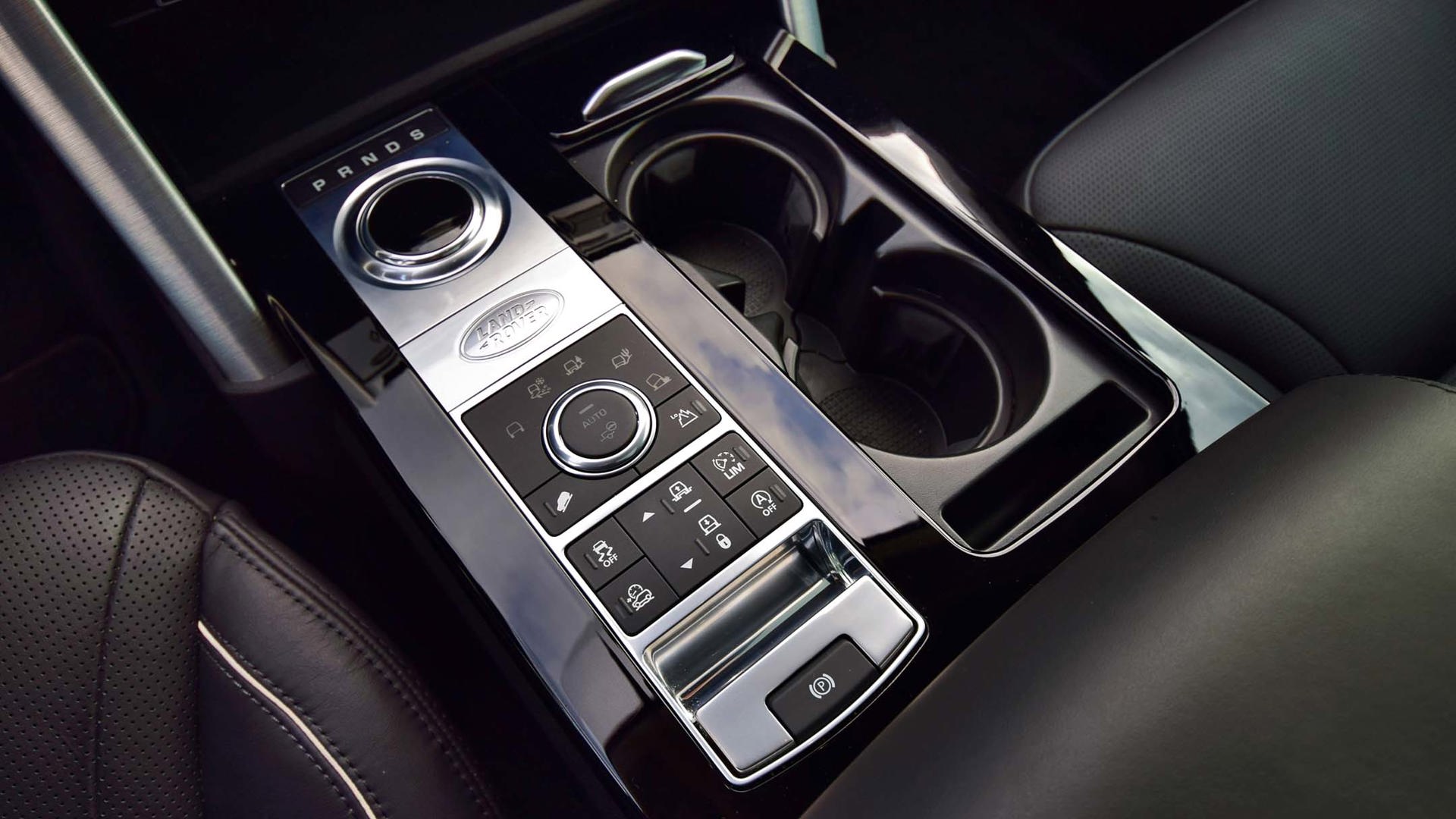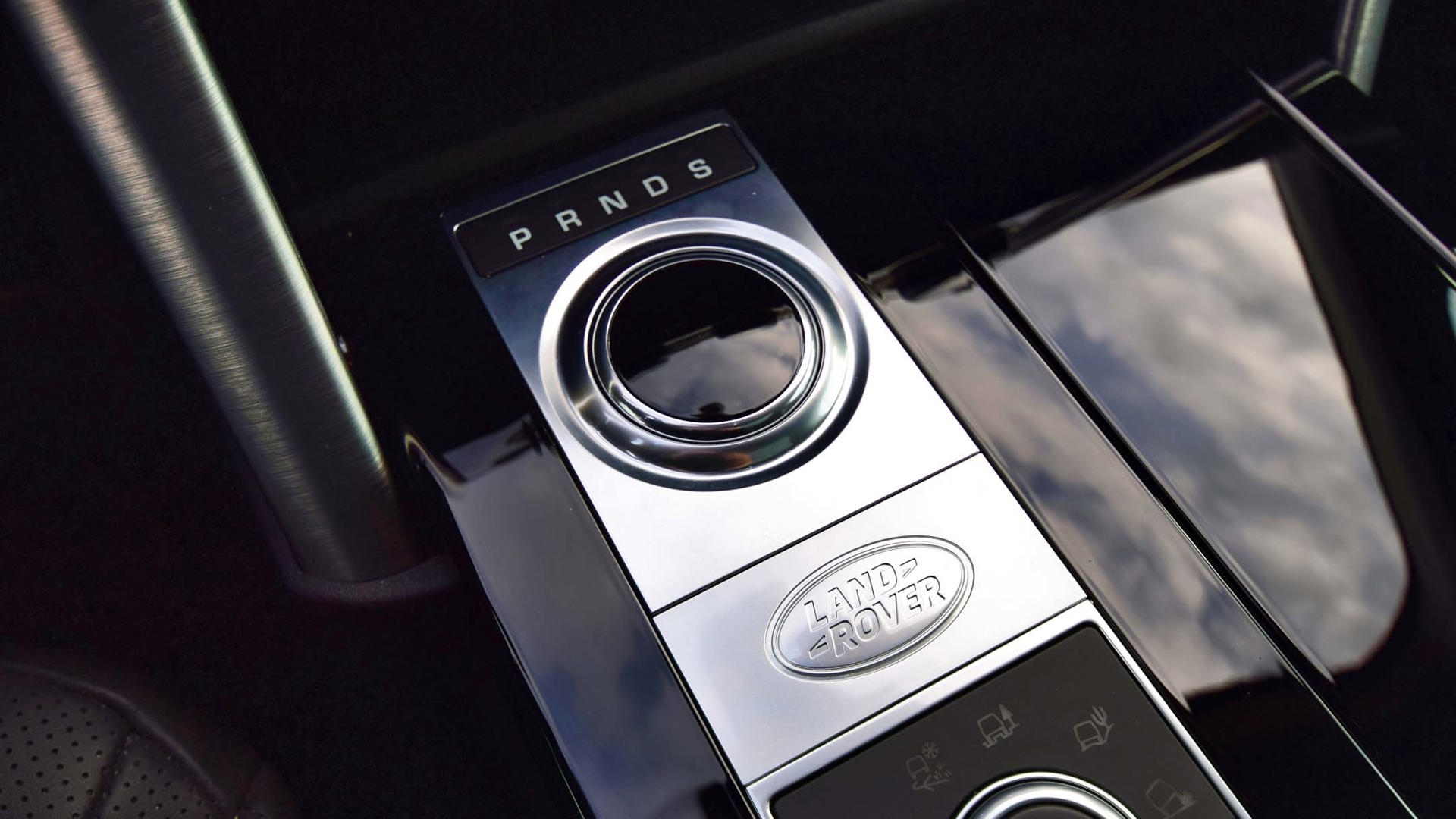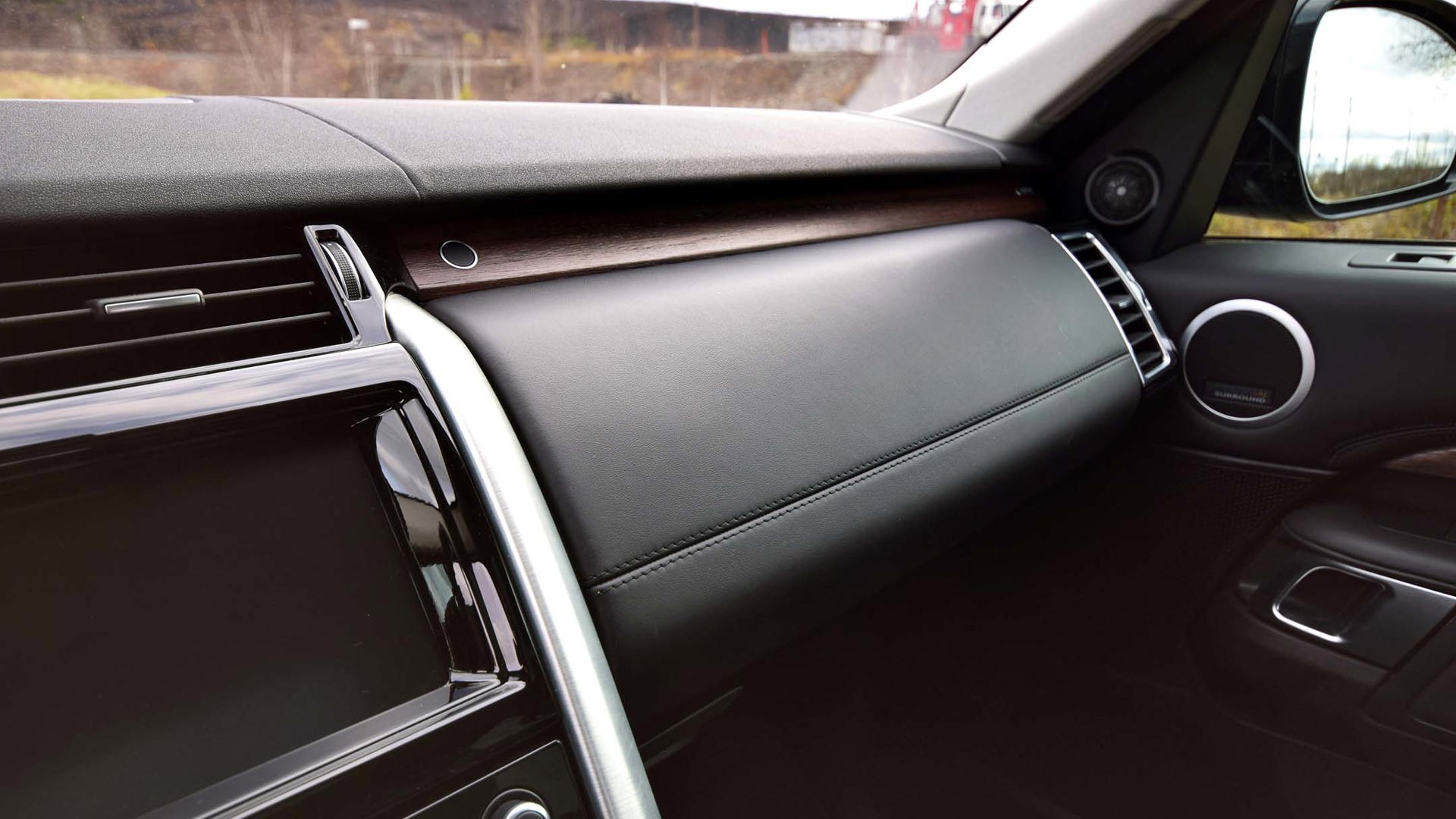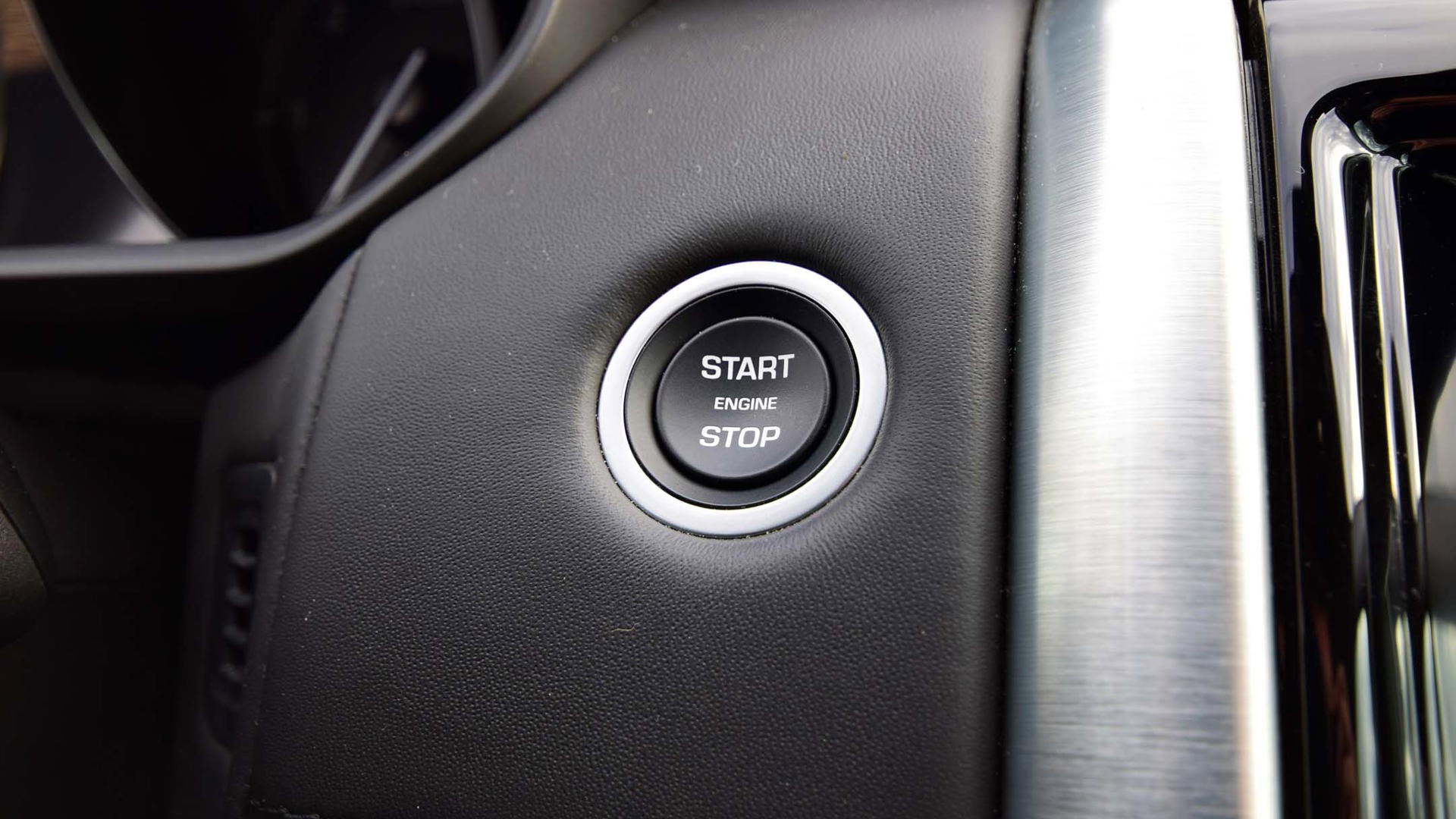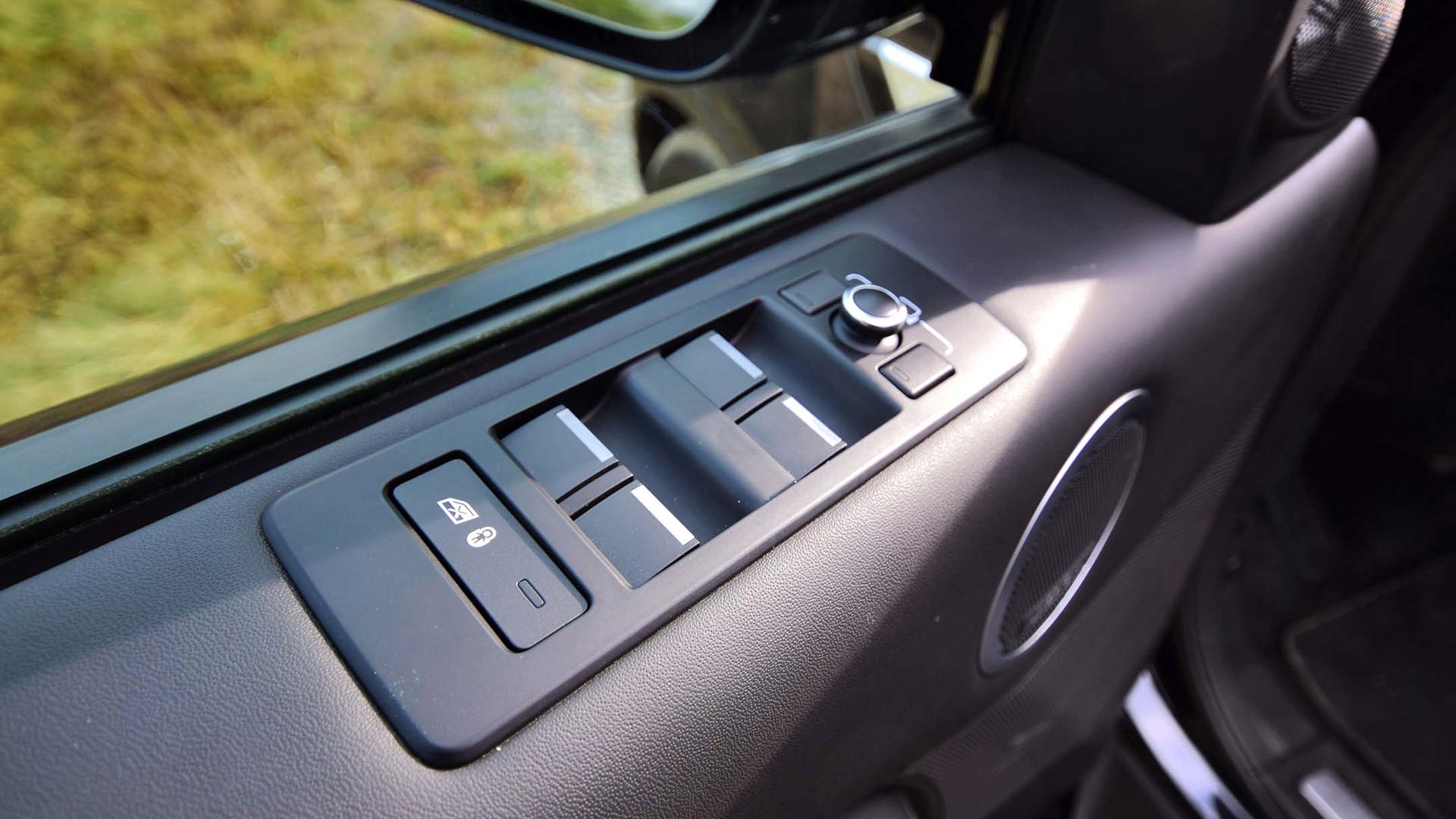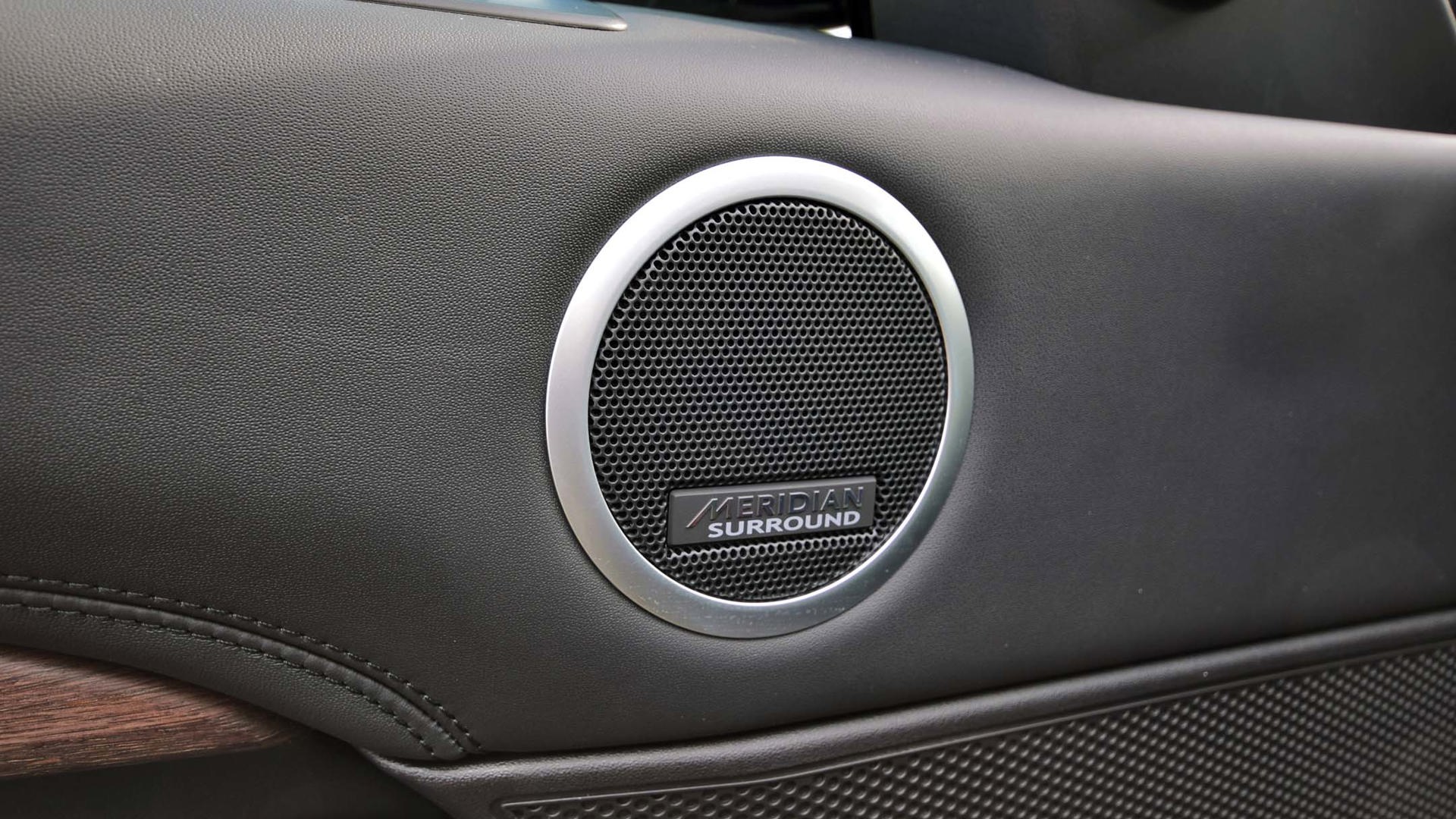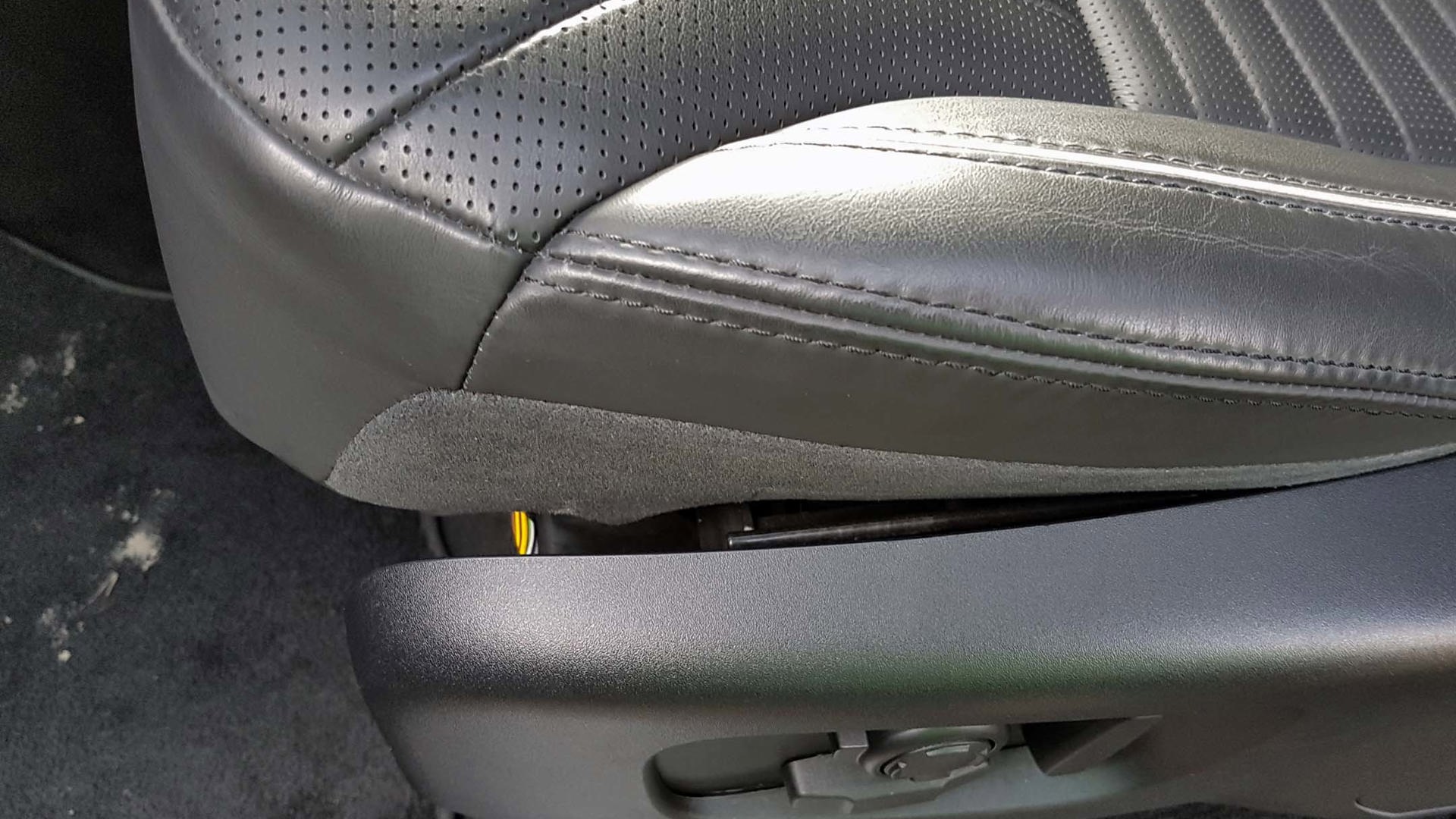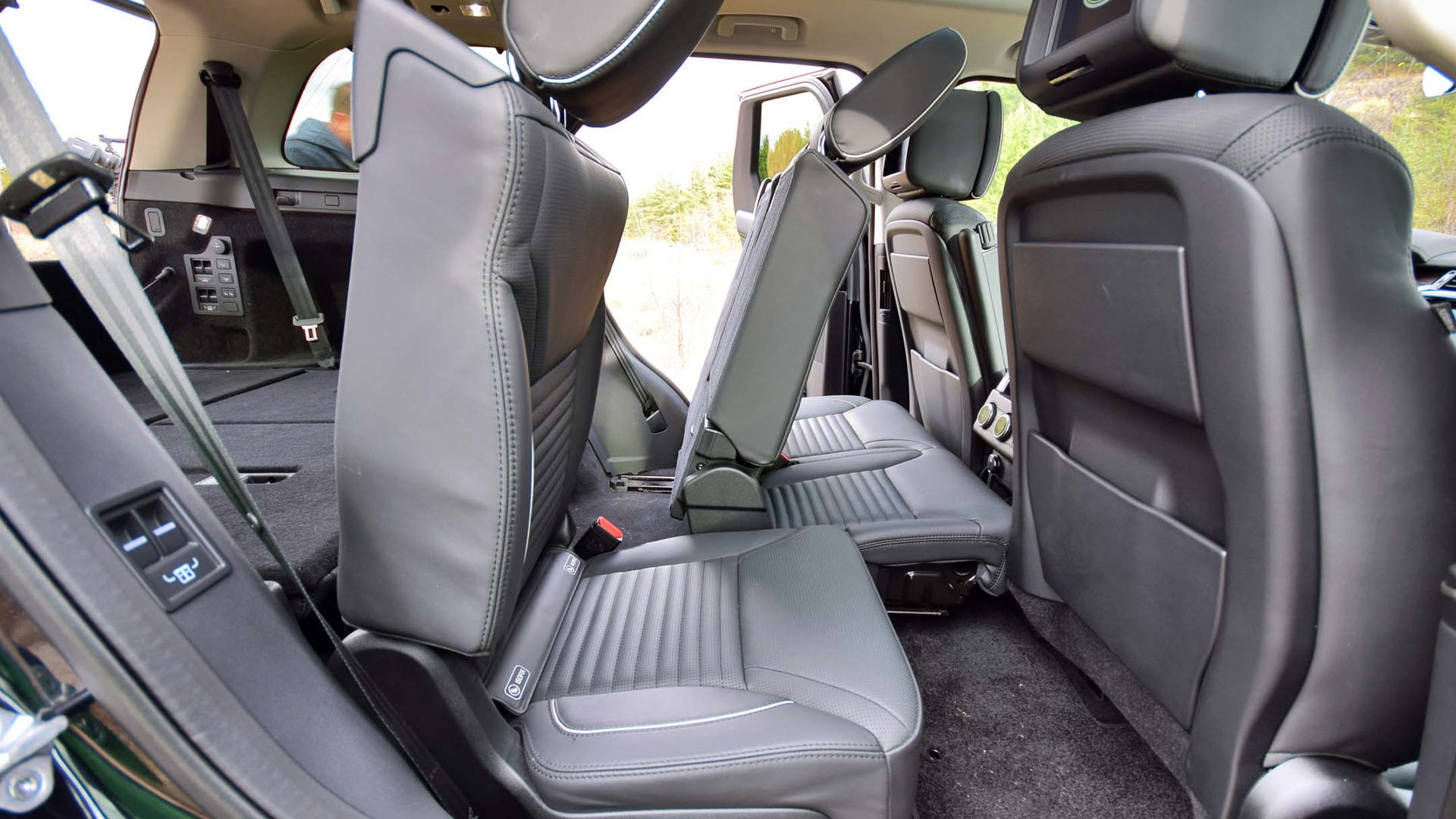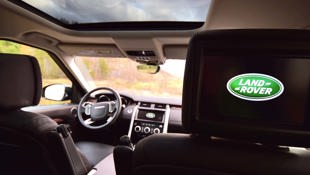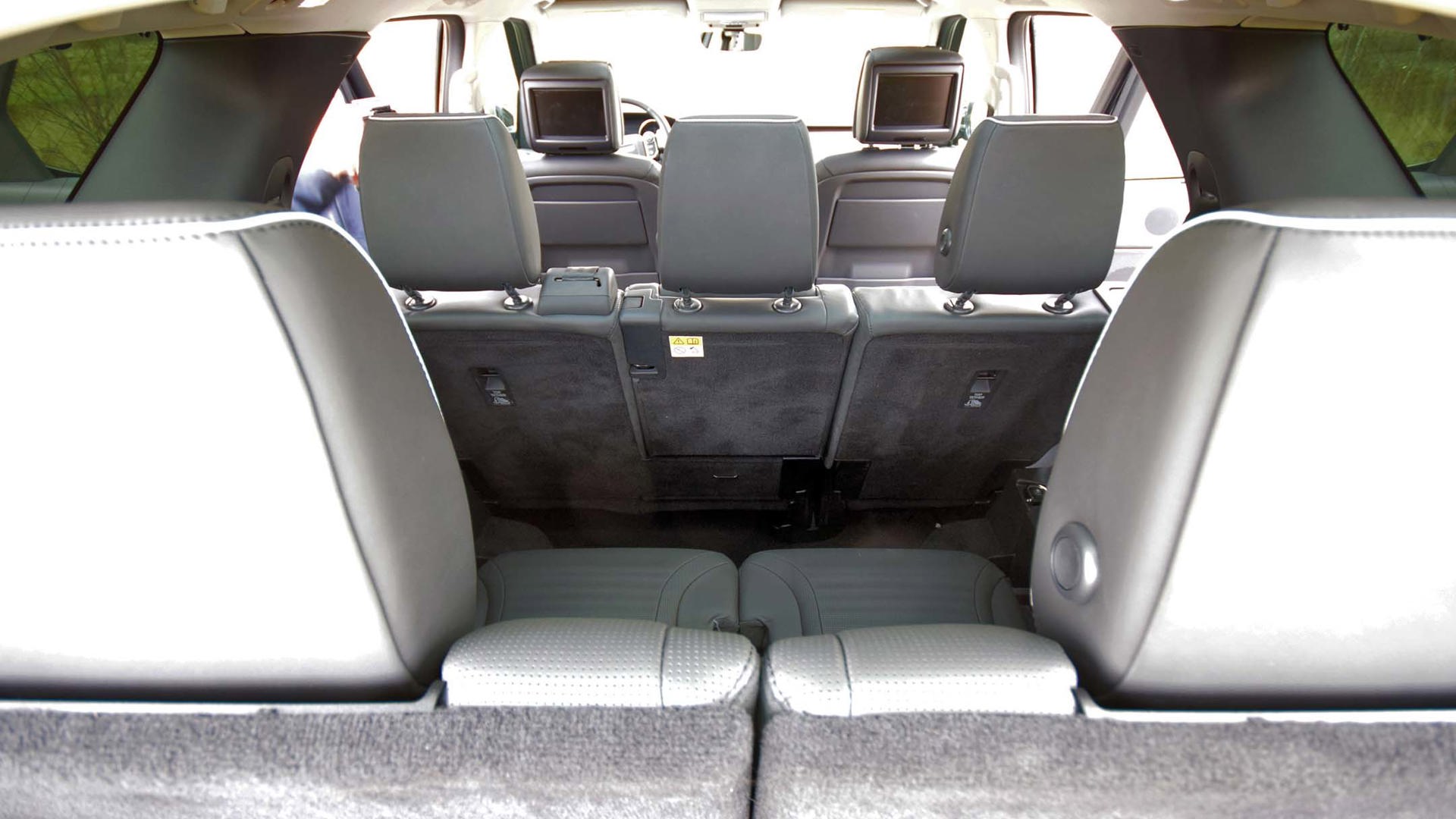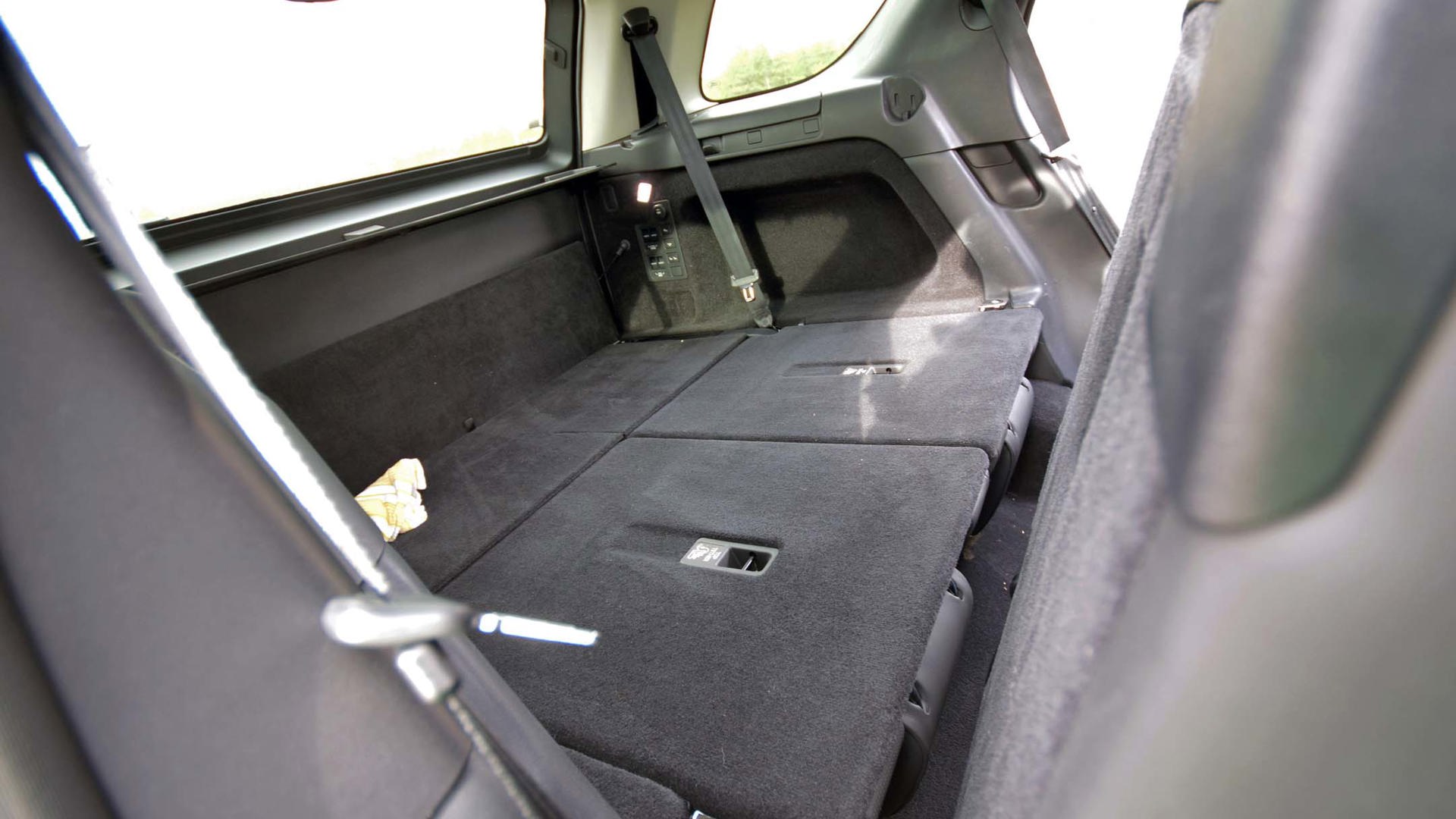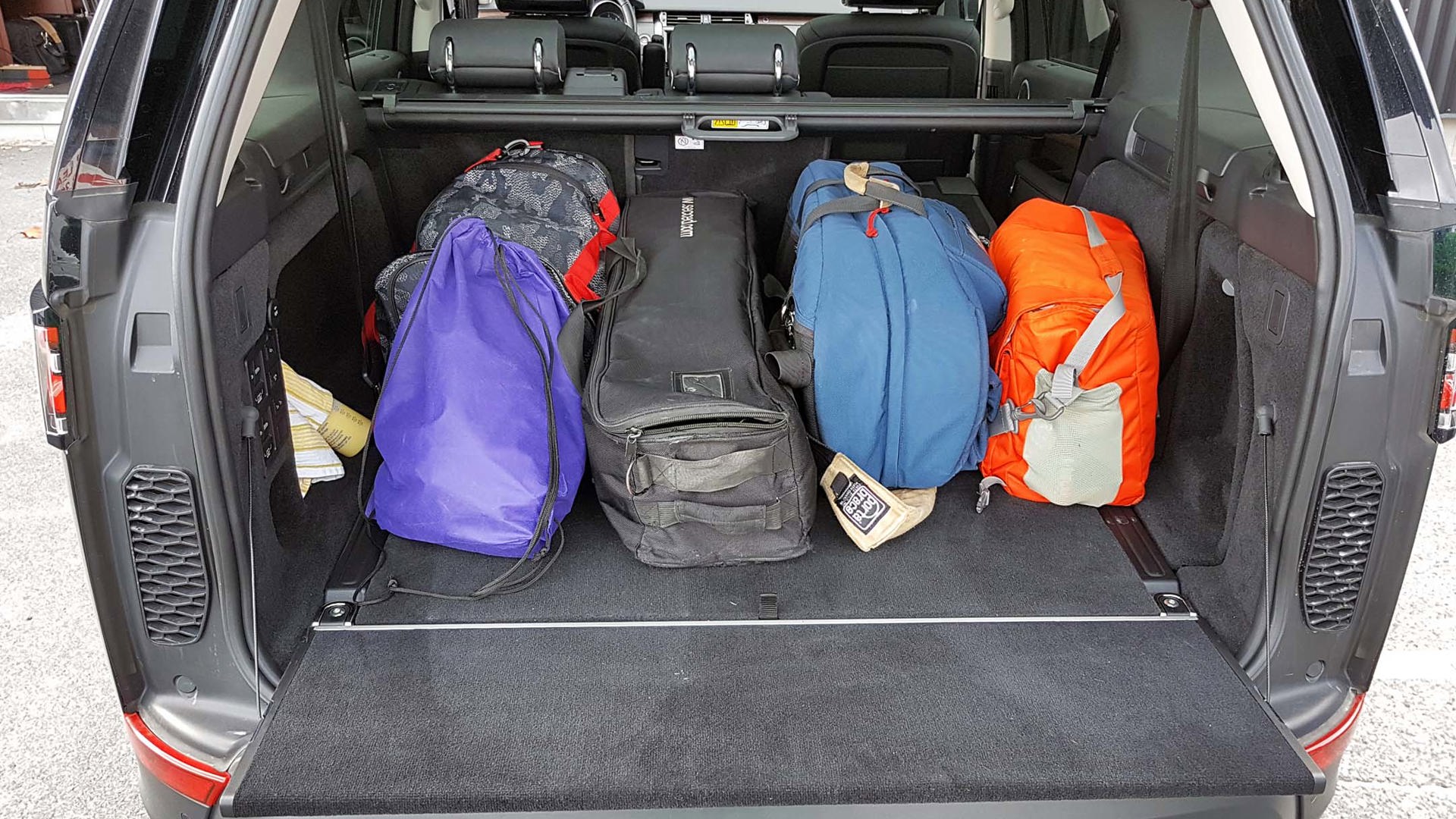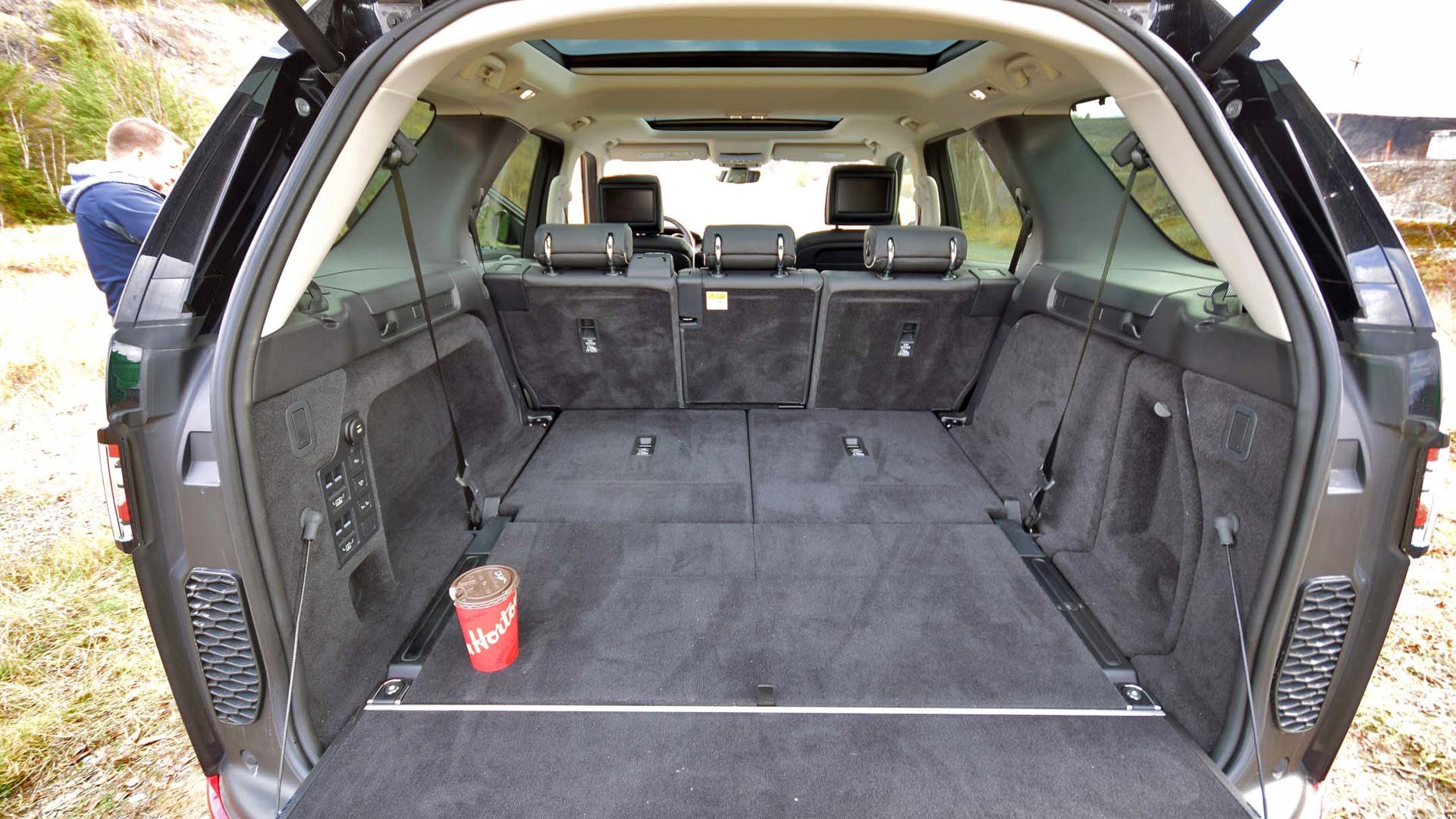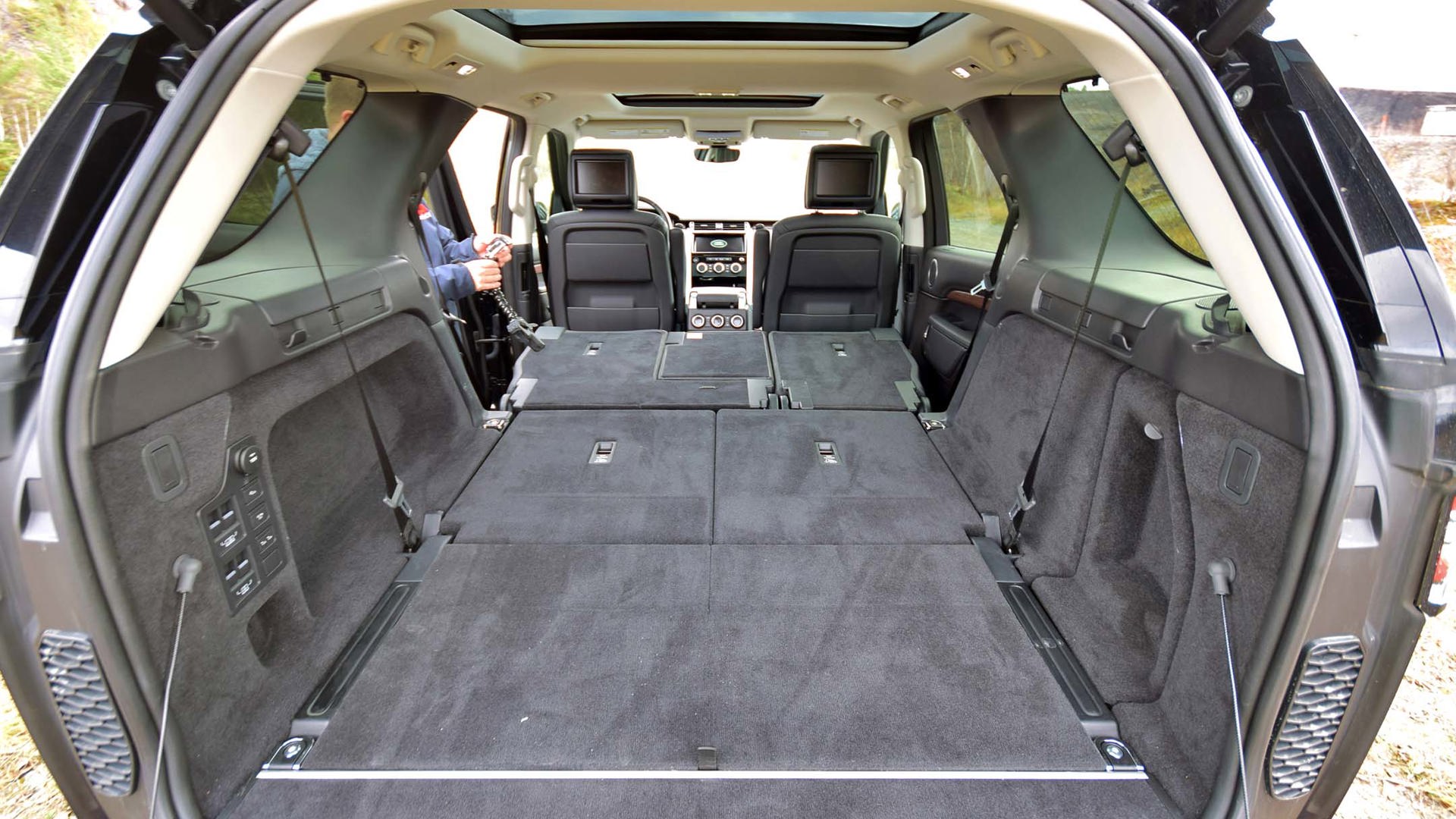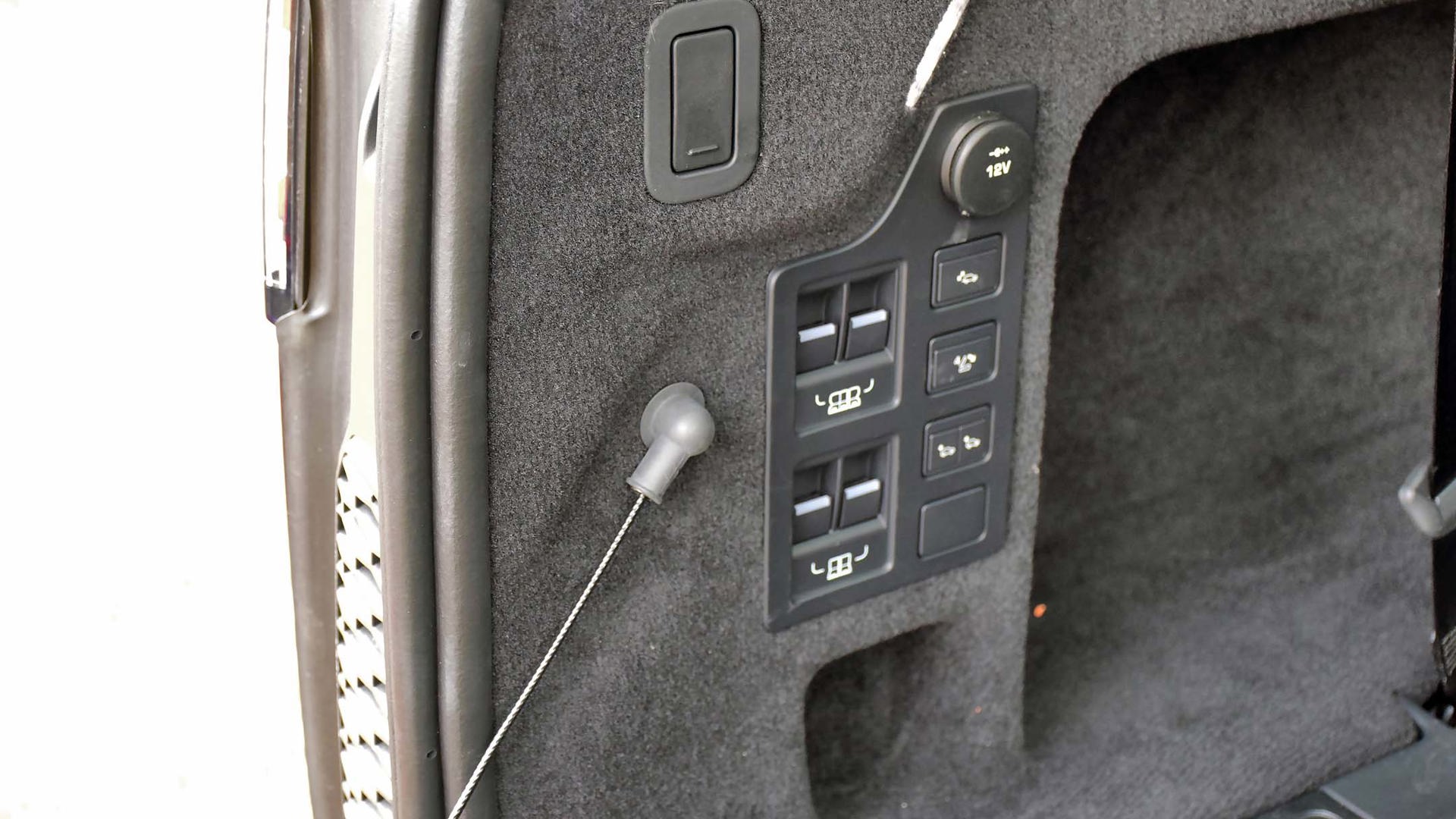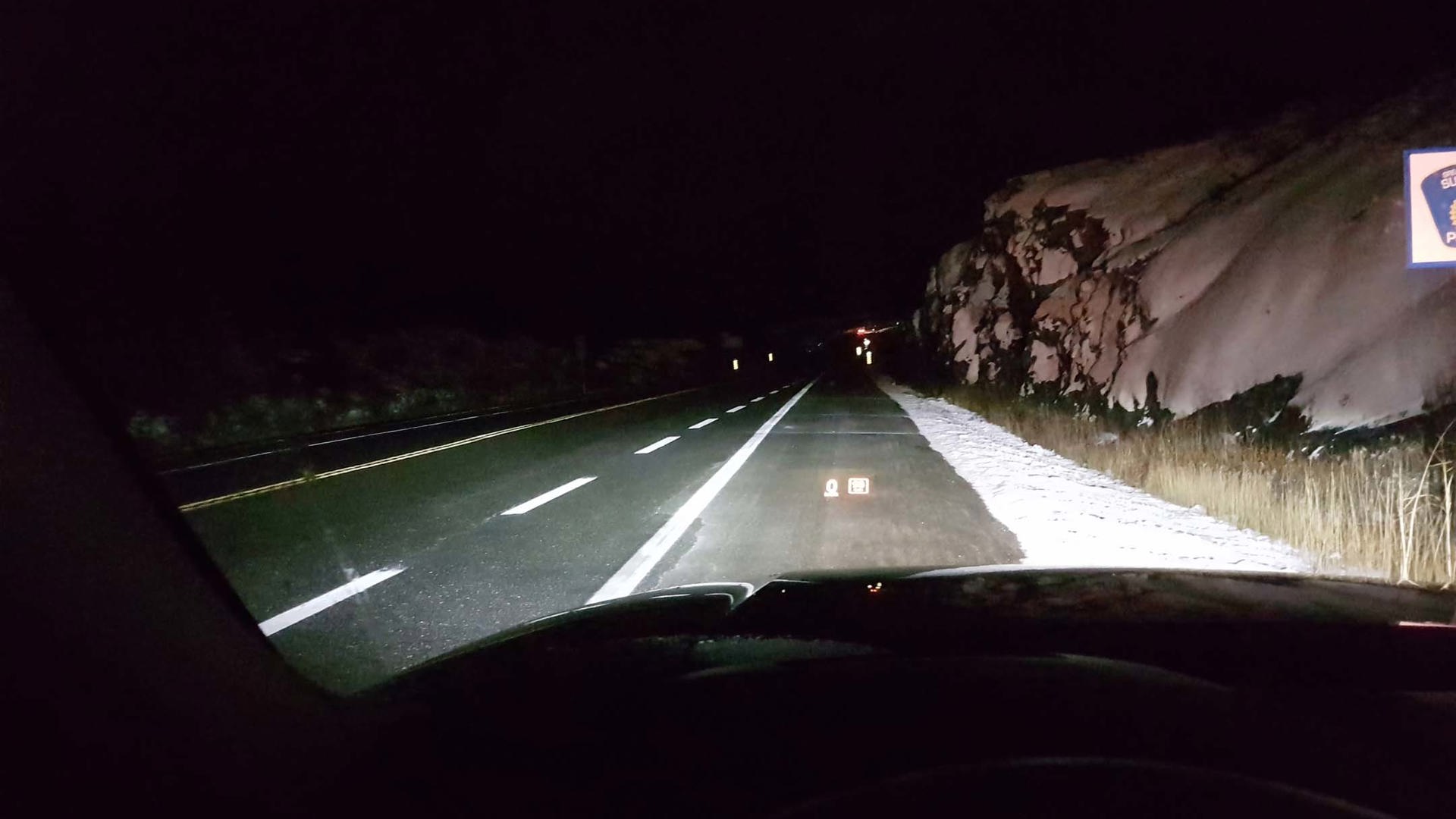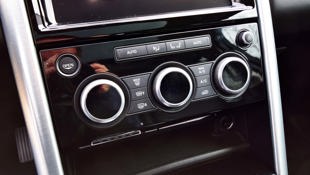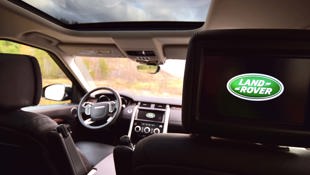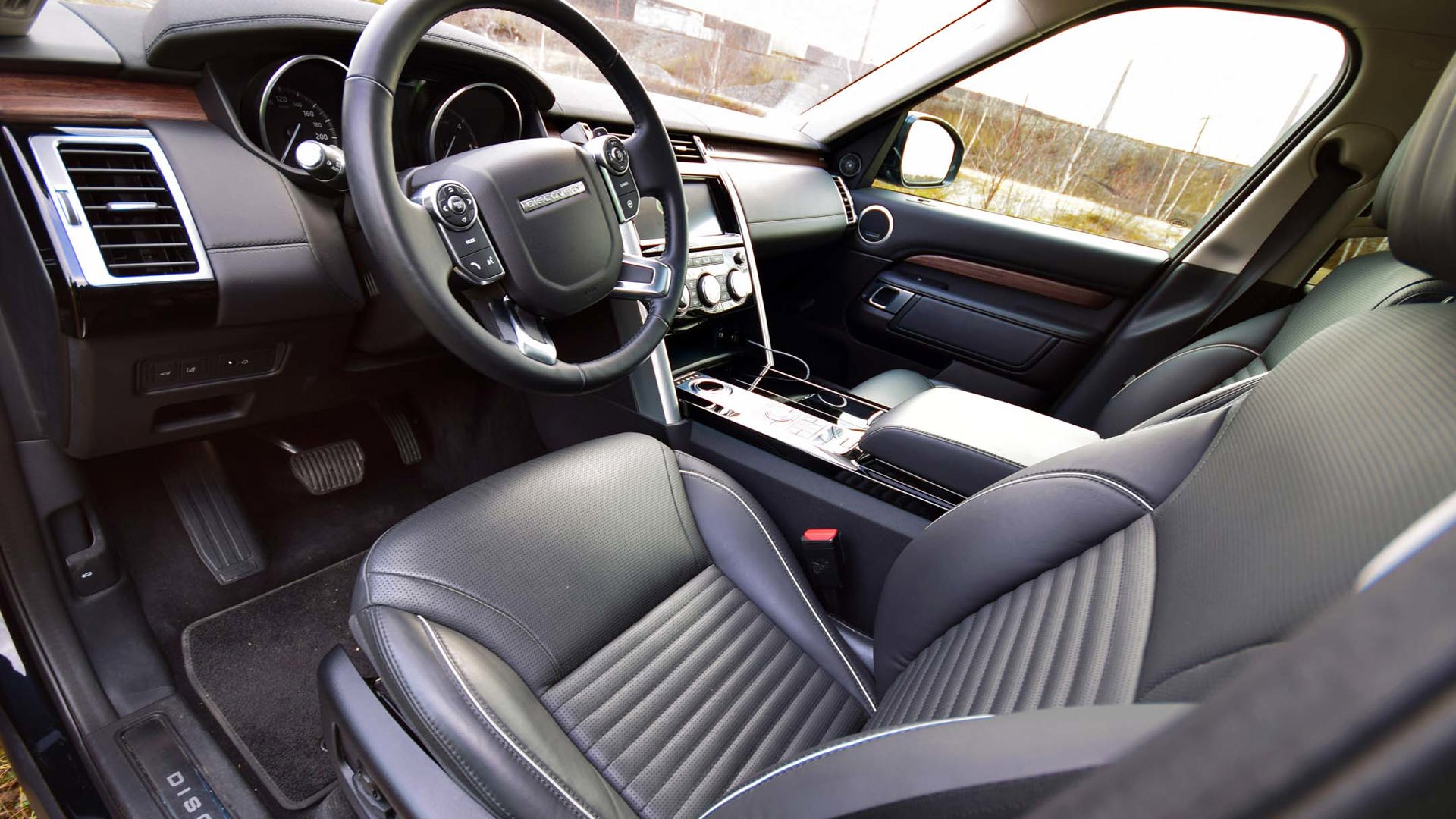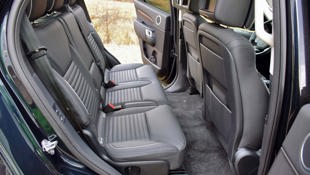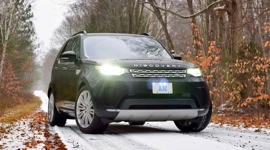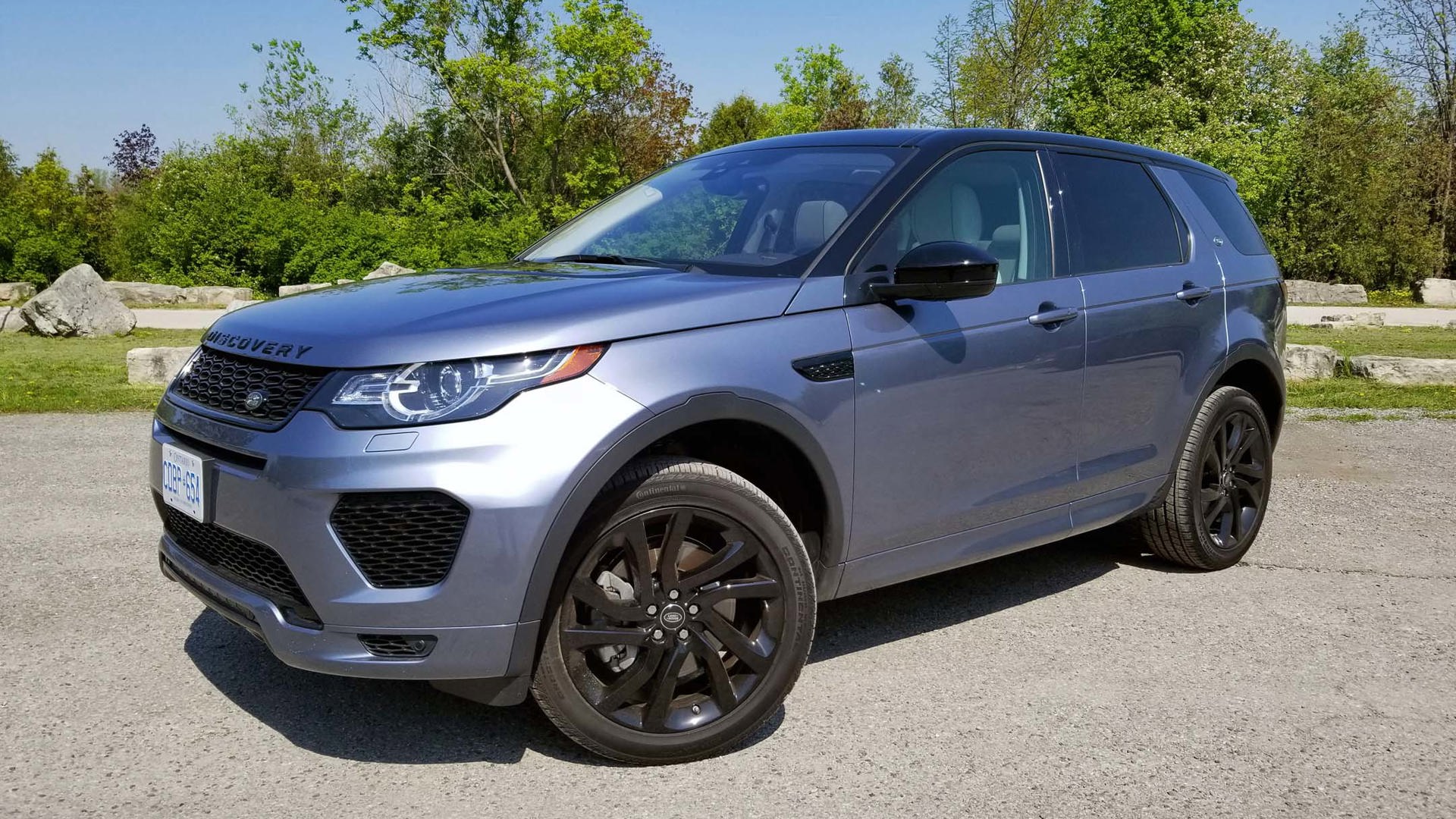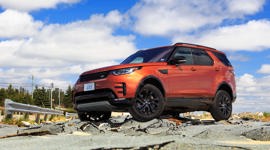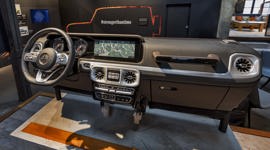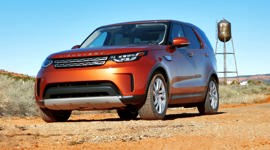 AutoTrader SCORE
AutoTrader SCORE
-
STYLING9/10
-
Safety8/10
-
PRACTICALITY9/10
-
USER-FRIENDLINESS9/10
-
FEATURES9/10
-
POWER9/10
-
COMFORT8/10
-
DRIVING FEEL8/10
-
FUEL ECONOMY8/10
-
VALUE9/10
Technology is neat. It allows humans to fire lasers into space to examine distant objects. To turn on our porch lights from the other side of the world. To take high-resolution videos with our cellular phones. To talk to just about anyone, anywhere, anytime we like.
Leave your feet on the floor. Steer with one finger. Relax, as the Discovery inches along. Sip your coffee. Talk to your pals. Worry about… well, virtually nothing.
Technology also lets mankind build luxury SUVs with a trick air suspension system that lets you, literally, sip a coffee in peace and quiet, sans spilling, while you cruise down an off-road trail.
Let me set the scene.
Evening drive. Me and two old pals decide to scope out a new path, double-doubles in hand. We’re in the new 2018 Land Rover Discovery, and the trail turns out to be a pretty rough one covered in rocks and moguls and ruts and whumps.
I stop a moment to get cozy with the Discovery’s off-road fancies, presented beneath my right hand via a sophisticated-looking pad of infographic buttons, and a central dial. A simple click or twist here tells the Discovery’s computer brain what sort of terrain it’s about to be driven on (or through), to deploy low-range gearing, to engage Hill Descent mode for steep grades, and to lift or lower the air suspension.
There’s also All Terrain Progress Control, or ATPC, which is sweet. It’s like off-road cruise control that you use to go very, very slowly.
Set it and forget it off-roading
In the same way you’d set your speed to 105 for a leisurely highway drive; at the start of a trail, you can use ATPC set your speed to, say, 2 km/h. This is maintained virtually regardless of the current incline or decline, or the surface beneath. Leave your feet on the floor. Steer with one finger. Relax, as the Discovery inches along. Sip your coffee. Talk to your pals. Worry about… well, virtually nothing.
Sure, other SUV models have had this sort of system, with various trade names, for years. But in the Discovery, more than virtually any other vehicle I’ve experienced, it really supports the character of the machine.
Case in point? I set the ATPC to 3 km/h, lifted the air suspension, and set off. Literally, we were cruising in the lap of luxury, catching up, sharing some laughs, and I’m using a single finger to steer the big, handsome Discovery down the path. The vehicle is doing all of the management. All of the thinking. We were just along for the ride.
At one juncture, I needed to back up and change course. Just twist the gearshift dial a half-inch one way for Reverse, then the other for Drive, and we’re off again. Literally, the mental workload is near-nil.
Manoeuvring around some obstacle, there’s no need to lean out of your window like a sucker, thanks to 360 degrees of customizable, high-resolution camera coverage with enough detail to make out the sharp, tire-threatening edges of nearby rocks. Various camera angles make it easy to see both the wheels and the ground near them.
Slick stuff. Comfy, too.
The Discovery’s air suspension has two talents. The first is to adjust ride height to the task at hand. Lifted up, it helps prevent the remodeling of the Discovery’s oil pan on boulders and logs that pass beneath. Hunkered down, it makes it easier for my clumsy golden retriever to jump in and out.
But it also enhances ride quality. Almost literally, the Discovery’s body is suspended over its wheels on a cloud of air. So, passing over the sort of pavement dips and whumps and moguls that send occupants flying around in many an SUV, you get scarcely more than a little squiggle-squirm from beneath.
The ride is less abrupt. You learn not to wince, and your muscles learn to relax, instead of bracing you for a good tossing-about in your seat. Occupants are more stable and stationary, more of the time.
And even in really challenging stuff, like steep hills with loose rock, deep muddy ruts, or nasty climbs, the Discovery’s composure is hard to break. You never second-guess it. In the same way a Porsche 911 feels absolutely in its element and inspires confidence on a track, the Discovery is built for off-road driving, and feels that way through and through – even solid and durable over the sort of trails that make many a posh-ute feel like it’s disintegrating beneath you like dollar-store toilet paper.
One caveat, though: very rough and especially jagged surfaces, including poorly maintained side roads and rough gravel roads, can quickly deteriorate ride quality, thanks to the big wheels and sporty, low-profile tires.
Effortless – whether driving or hauling
The Land Rover Discovery was all-new for 2017 and updated for 2018 by making diesels available throughout the range. The Disco was called into action to replace the now-retired LR4 with a unit that’s (plenty) lighter, more high-tech, and more efficient. As a product, it’s something different: a classy-as-all-heck Brit, in a market segment occupied heavily by the Germans. A luxury utility vehicle that has its sights set on the driver who will actually visit the trails, from time to time, or maybe every weekend. It’s a looker, too. Many folks will overshoot the price by ten grand or more, if asked to guess.
And sure, like all of its competitors, it’s brimming with tech, loaded with gadgets, and has four-wheel drive, multiple seating rows, and a great big stereo. But a few rare elements and attributes help this one to really stand out in a crowd.
The diesel engine is one. The so-called Td6 powerplant is a 3.0-litre V6, turbocharged, for 258 horsepower and 443 lb-ft of torque, available from hilariously low revs. Throttle response is instant and pleasing. Passing power is generous. Fuel use is remarkable, given the size and capability and output – even if the Discovery clocks in at around 1,000 pounds lighter than the LR4 is replaces. On my highway-intensive drive, mileage landed under 11.0 L/100 km.
But here’s the magic: once there’s a little warmth in the engine after a moment or two of driving, you’re hard-pressed to hear any of the telltale signs of a diesel-burning mill under the hood. Turbocharger whistle? Clackity-clack-clack sound effects from the injectors? A low-pitched grumble as the engine works the vehicle up to speed? Nope, and that’s even if you’re paying really close attention. You almost never hear from the engine at all, let alone hear that it’s a diesel. There’s no detectable vibration either. None. And finally, the charming disconnect between torque output and the noise levels generated to create it almost calls a high-output hybrid electric to mind.
The seating system is another great touch. Discovery’s middle row offers up three seats, and should fit two adults very comfortably, three in a pinch. Behind that, a third row offers up two additional seats (that’s seven in total), though they’re best left for the kids. Need to turn the Discovery from family hauler to cargo van? Just touch a single button on the rear cargo control pad, and rows two and three fold flat, automatically. The same functionality is available from the central screen, meaning drivers can make the five rearmost seats disappear, or reappear, without even taking off their seatbelt.
Got something heavy to load? Tap another button on the cargo area control pad, and the Discovery squats down to the ground for easier loading. Slick stuff.
Opulent interior layout, dazzling view out
Up front, a typical Land Rover cabin. Fantastic leather, wood trim, and plenty of gloss black accents combine towards an upscale atmosphere with depth and richness, all without looking too loud. The central display interface is big, slick, and vivid, and highly responsive. Below it, the climate control console flips open, revealing a clever secret compartment to keep valuables out of sight. Storage is abundant elsewhere, with a deep centre console bin and door cubbies, and the high, upright, and commanding driving position is easy to appreciate.
Other notables? Headlights are among the best I’ve ever used. On unlit roads, clean light as bright as a welding flash floods the road ahead, reaches deep into culverts and treelines, engages reflective signage at an admirable distance, and shows consistent spread with no splotches or dark spots anywhere near the vehicle.
Translation? This lighting system is a safety enhancement, and can help fend off after-dark eye strain for hours. Yet another example of the effective use of the latest technology.
A few gripes, though. Highway cruising noise levels are mostly hushed, but a touch louder than I expect in a machine in this pricing ballpark. The instrument cluster, carried over from other models, looks dated and plain in contrast to much of the rest of the cabin. Further, a few fit-and-finish bits let the driving environment down slightly, mainly relating to a plastic cover on the side of the seat that never lined up properly, and revealed the unsightly innards of the seat mechanism within.
My biggest complaint was the steering at highway speeds. Partly because of the steering calibration, and partly because of the lane-departure system being a little too pre-emptively aggressive, the Discovery often seems to be getting nudged around, even startled a little, at speed. Turning the lane-departure system off helps a measure, but ultimately, the steering is a little too quick and light for the softness of the suspension.
So – it looks like a million bucks, but Discovery starts in the low sixties, with the diesel-powered tester in a nicely loaded build coming in from the mid-seventies. Go full jam like my tester, and you’re pushing closer to six-figure territory. Big bucks, yes, but a relative deal, given that it gets you, arguably, the luxury SUV segment’s most handsome face, best diesel engine, highest level of off-road capability, and among the best headlights, seating system, and ride quality going.
| Engine Displacement | 3.0L |
|---|---|
| Engine Cylinders | V6 |
| Peak Horsepower | 254 hp @ 3,750 rpm |
| Peak Torque | 443 lb-ft @ 1,750–2,250 rpm |
| Fuel Economy | 11.3/9.2/10.4 L/100 km cty/hwy/cmb diesel |
| Cargo Space | 1,137/2,406 L (rear seats folded) |
| Model Tested | 2018 Land Rover Discovery HSE Luxury Td6 |
| Base Price | $79,100 |
| A/C Tax | $100 |
| Destination Fee | $2,095 |
| Price as Tested | $90,895 |
|
Optional Equipment
$9,600 – Rear Seat Entertainment $2,040; Multimedia Head Up Display $1,020; Drive Pro Package $2,350; Luxury Climate Comfort Package $1,940; Vision Assist Package $1,020; Capability Plus Package $1,230
|
|
